After a brief stay near the Albert Nile, we returned to the mainland where similar scenes to those before we went to the river were repeated. There were giraffes, as well as numerous antelopes.
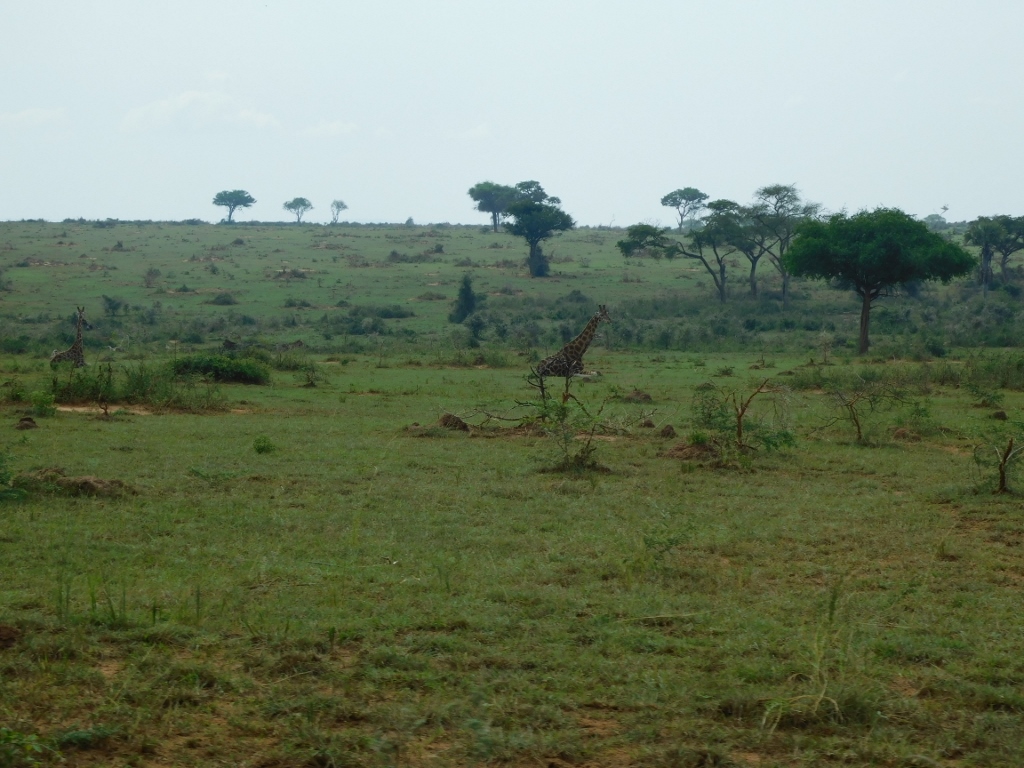 Giraffe and the landscapes of Merchison Falls NP
Giraffe and the landscapes of Merchison Falls NP
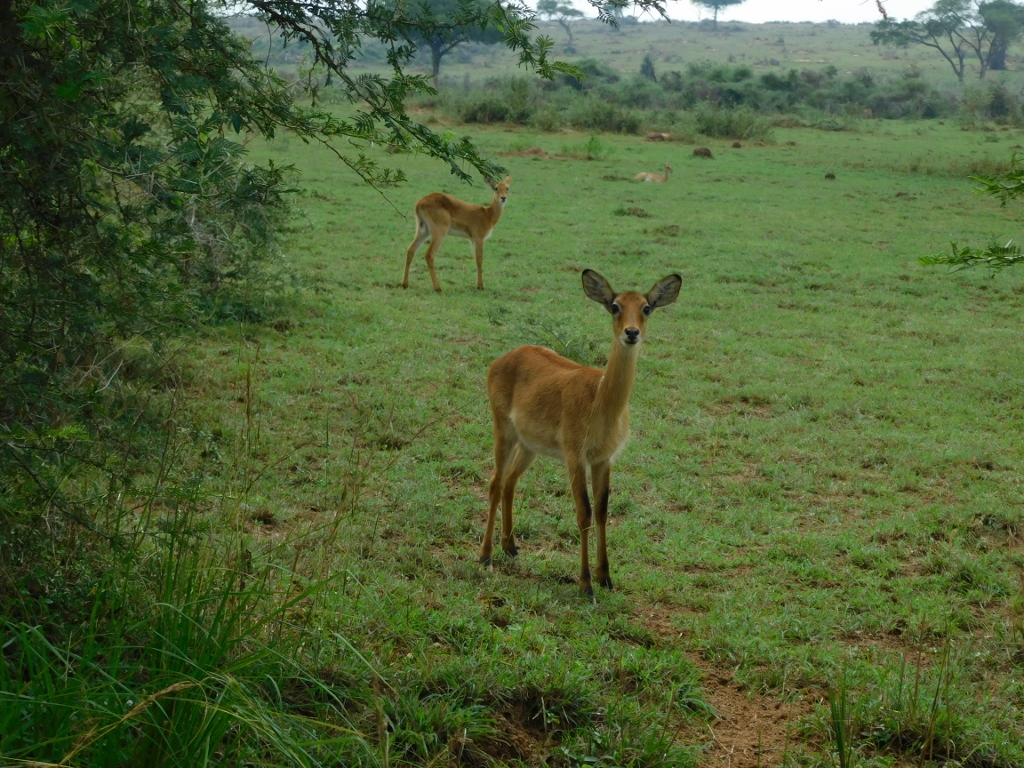 Antelopes and the landscapes of Merchison Falls NP
Antelopes and the landscapes of Merchison Falls NP
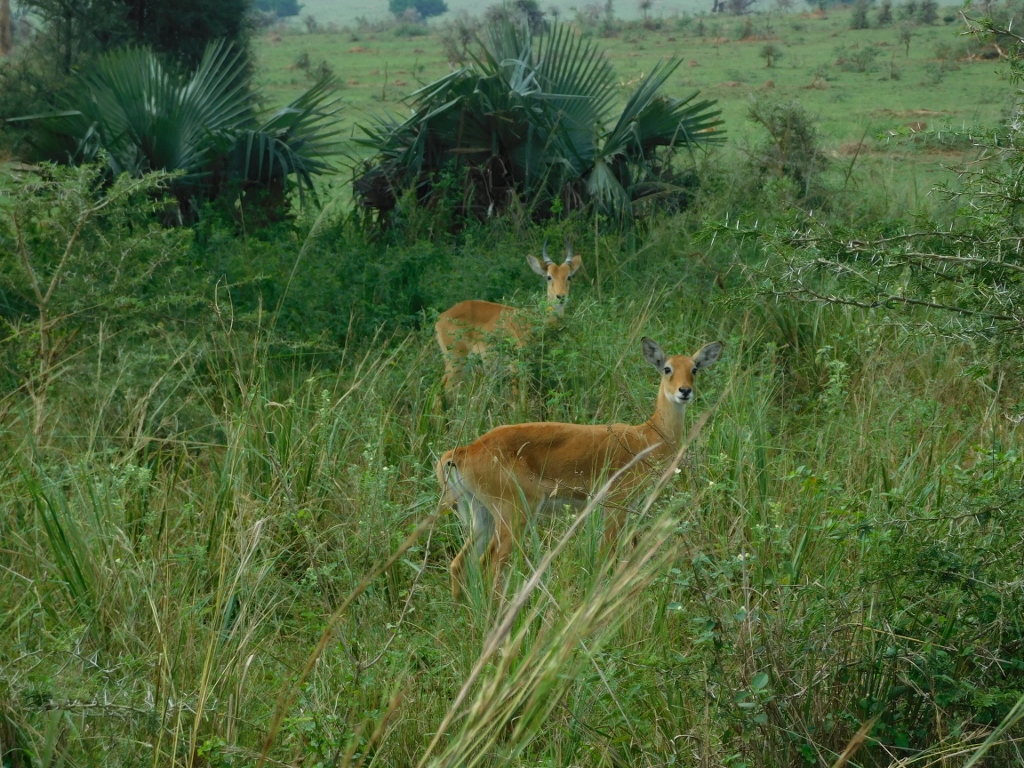 Antelopes and the landscapes of Merchison Falls NP
Antelopes and the landscapes of Merchison Falls NP
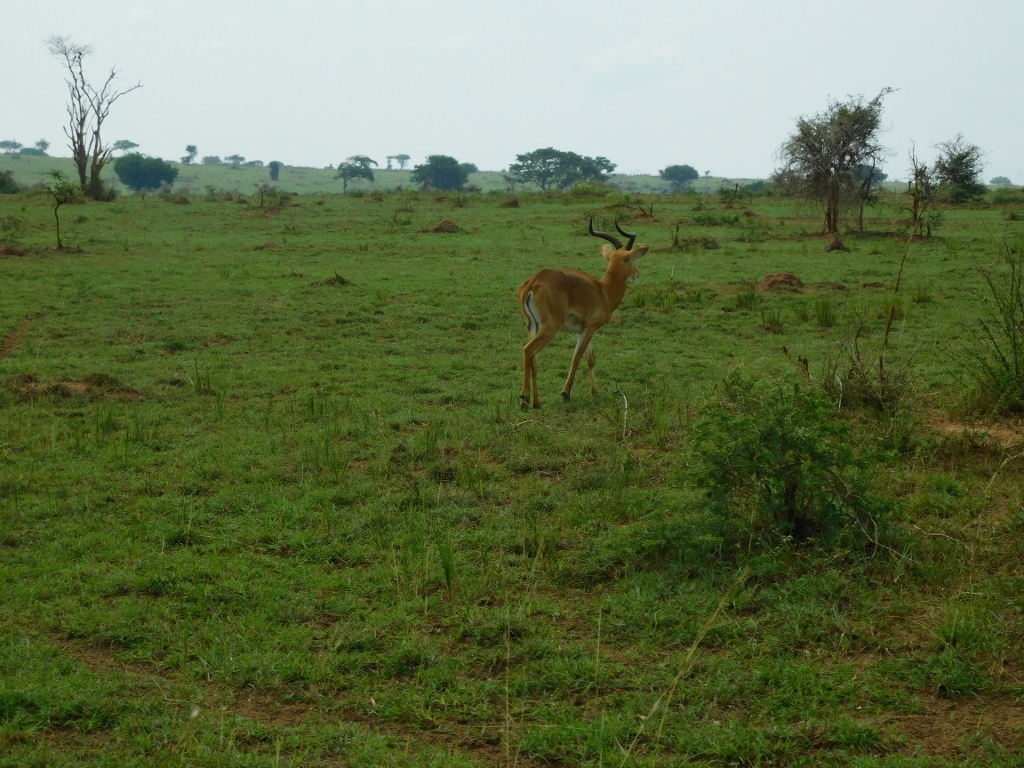 Antelopes and the landscapes of Merchison Falls NP
Antelopes and the landscapes of Merchison Falls NP
Then I spotted a truly large bird. It was a Denham's bustard (Neotis denhami), classified as "near threatened." Males of this species can grow to over 1 m in height and weigh up to 10 kg.
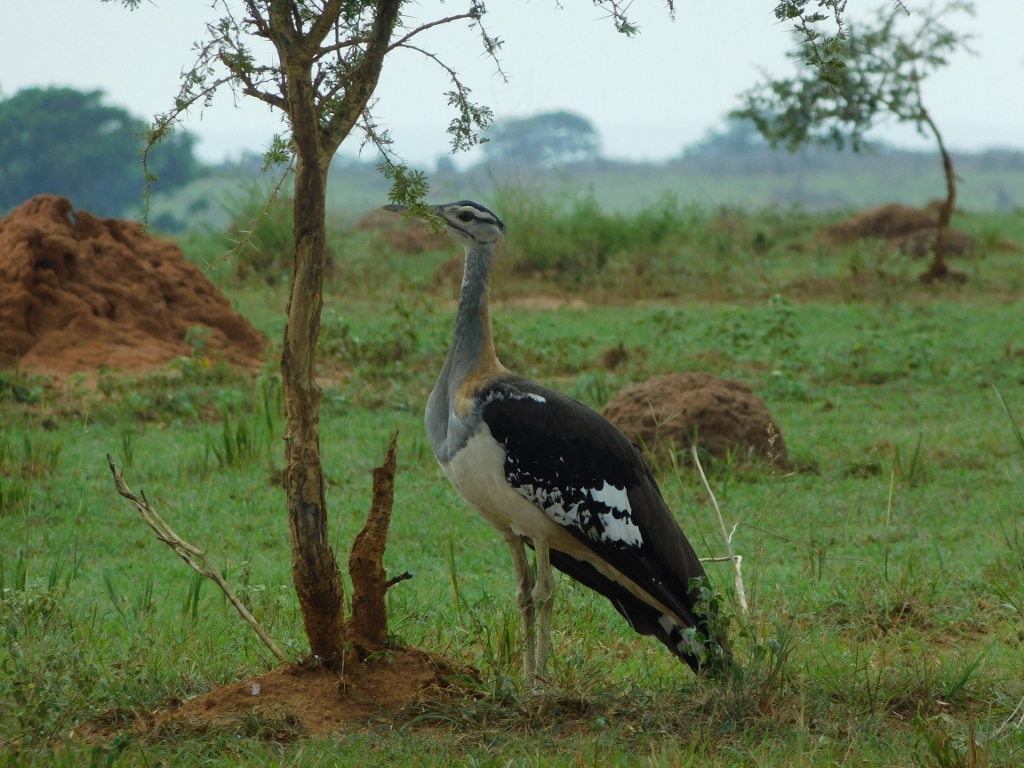 Denham's bustard
Denham's bustard
Then we came across a serious fight. It involved two common warthogs. I found it particularly interesting to see in the second photograph how one of them knelt on its front legs, as if grazing, but that did not affect the fight at all. I don't know what happened in the end or who won.
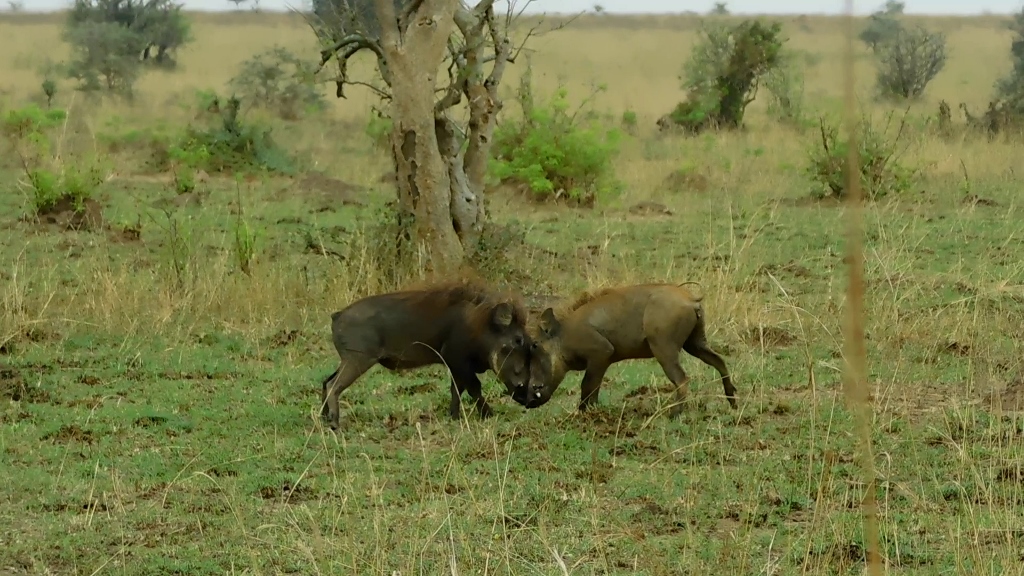 Common warthogs
Common warthogs
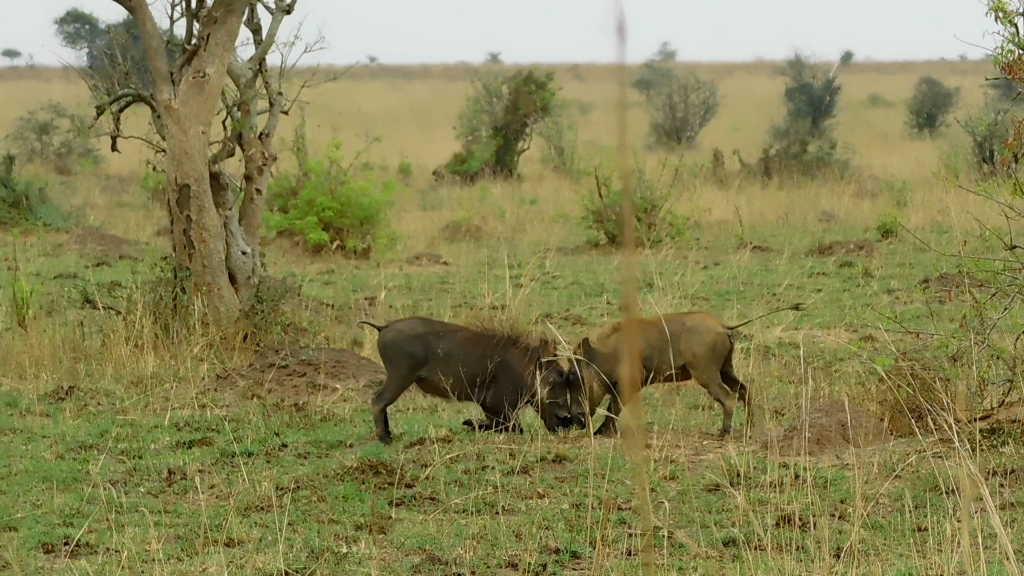 Common warthogs
Common warthogs
Then we arrived at a place where the "fight" was already over, while the clear sign was the presence of vultures. From my side of the vehicle, I spotted a couple of them just some 20 m away from the road and I was thrilled. They were a Rueppell's griffon (Gyps rueppelli), one on the left, and two white-backed vultures (Gyps africanus), on the right.
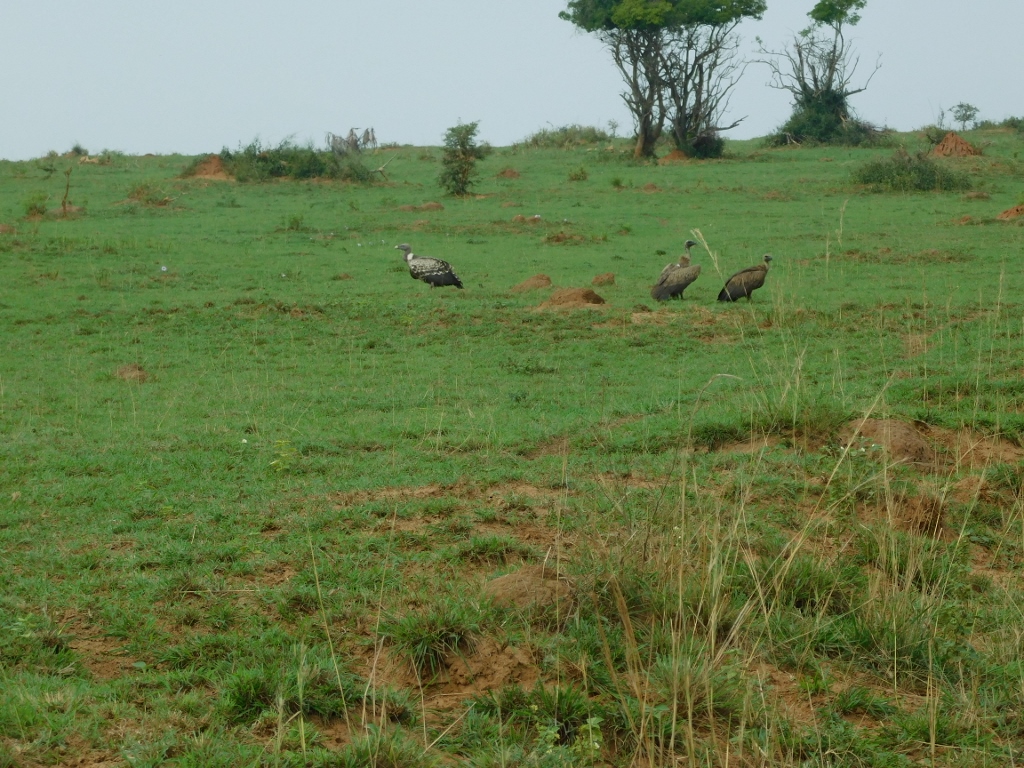 Rueppell's griffon and two white-backed vultures
Rueppell's griffon and two white-backed vultures
However, since my colleagues and hosts knew I was particularly interested in birds, they all drew my attention to a situation unfolding on the opposite side of the road. There was everything needed for drama: a carcass and two vultures. Here, it was a lappet-faced vulture or Nubian vulture (Torgos tracheliotos), on the left, and a white-backed vulture (Gyps africanus), on the right.
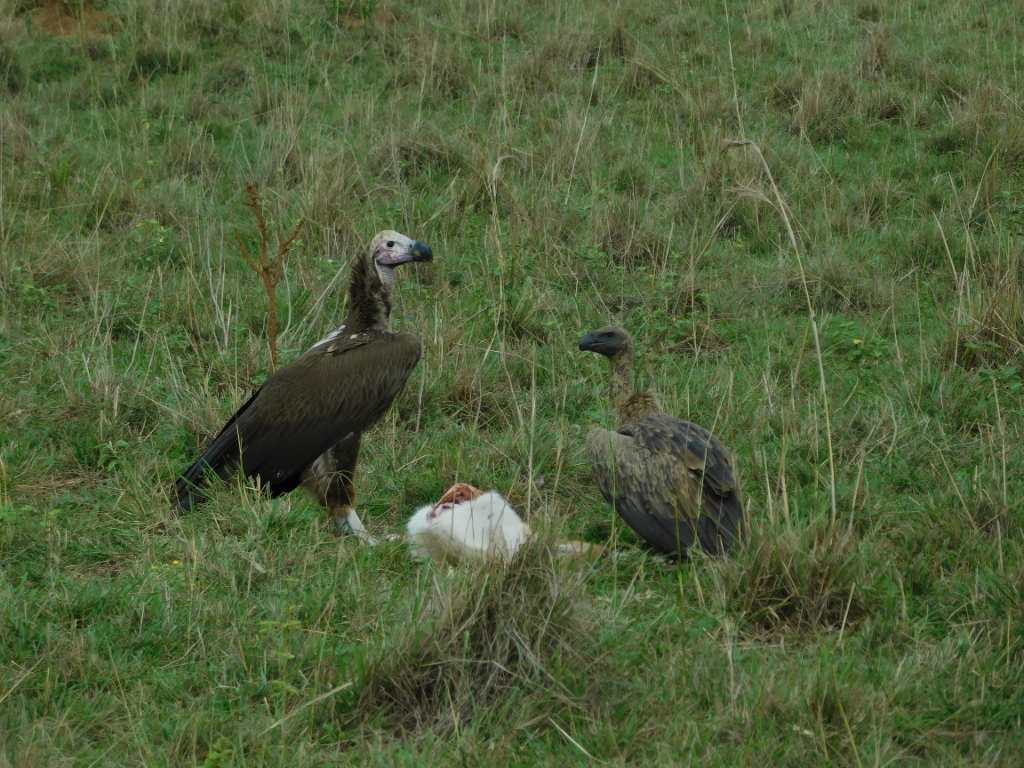 Lappet-faced vulture and white-backed vulture
Lappet-faced vulture and white-backed vulture
By the way, it’s worth mentioning that all these vulture species, and there were even three here (!), are endangered. The white-backed vulture and Rueppell's griffon are critically endangered, while the lappet-faced vulture is “only” endangered. It was nice to see them sharing a meal and to know that they are still around. Of course, the lappet-faced vulture dominated the scene, but I believe the other vulture managed to get something to eat as well.
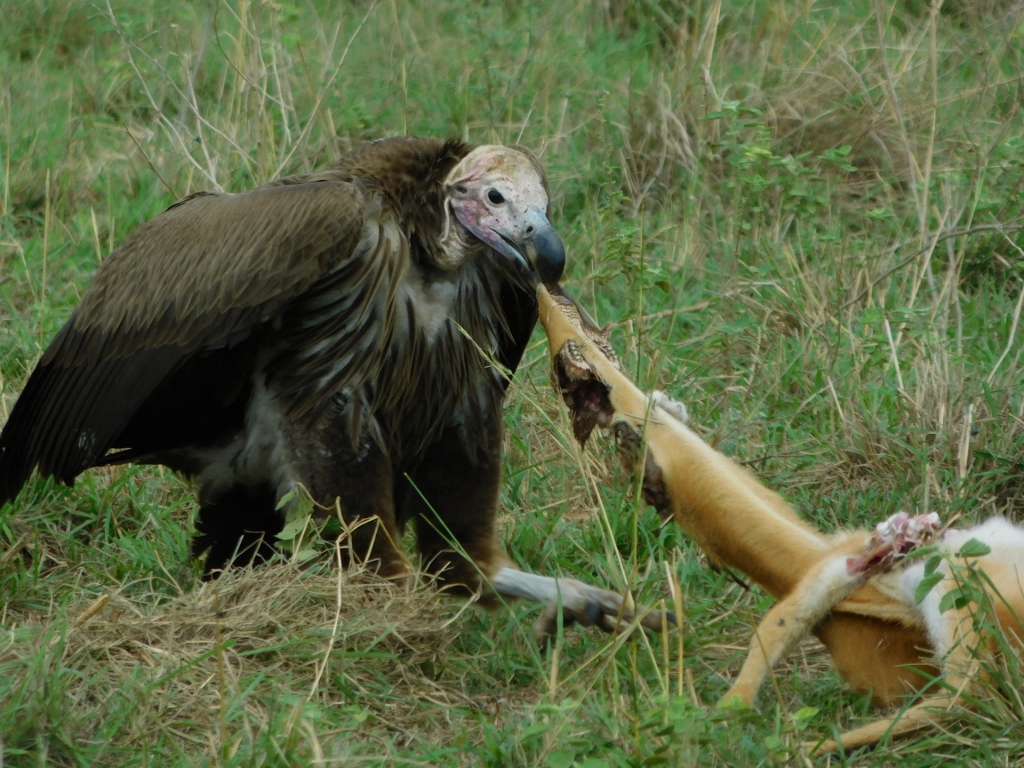 Lappet-faced vulture
Lappet-faced vulture
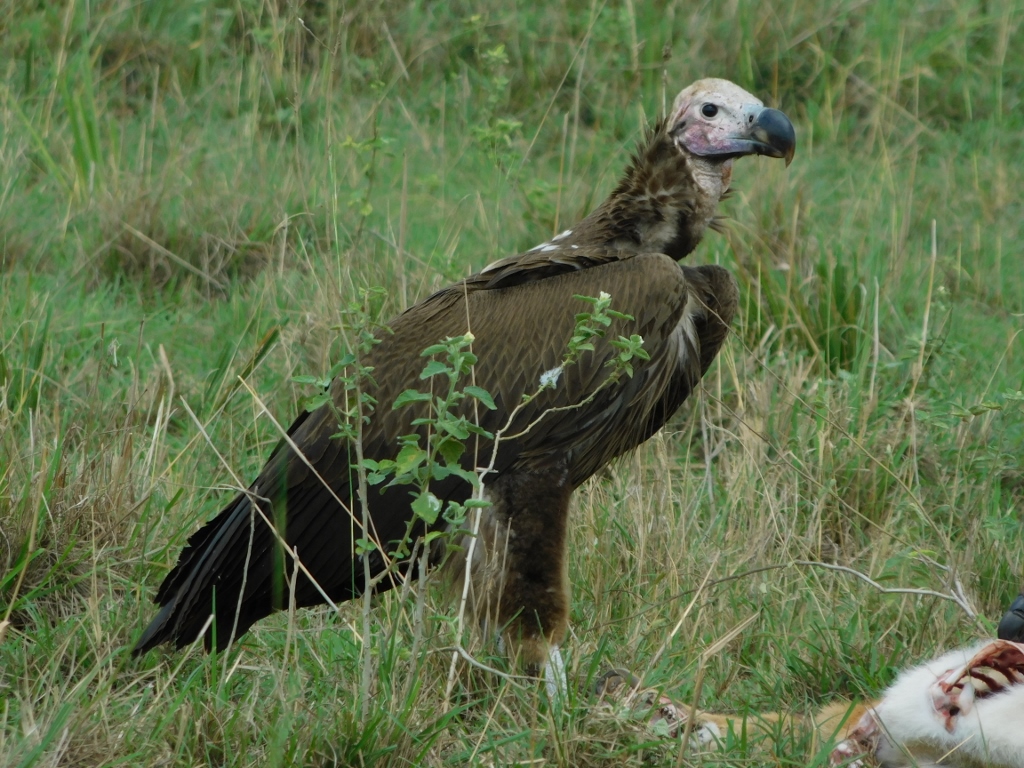 Lappet-faced vulture
Lappet-faced vulture
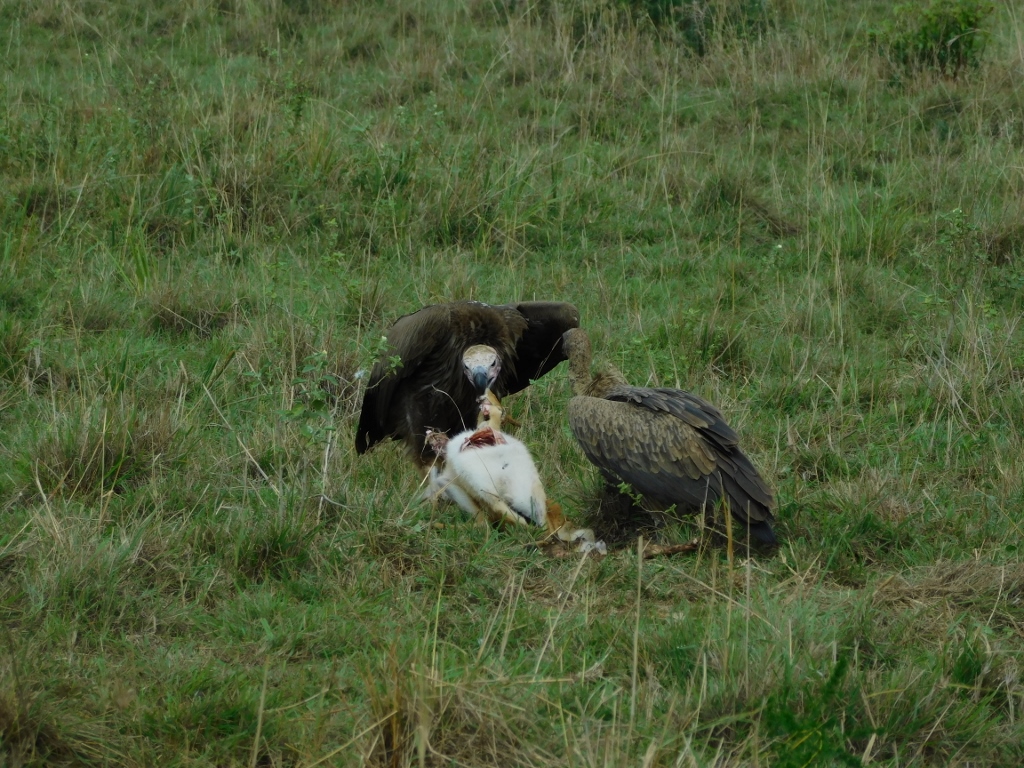 Lappet-faced vulture and white-backed vulture
Lappet-faced vulture and white-backed vulture
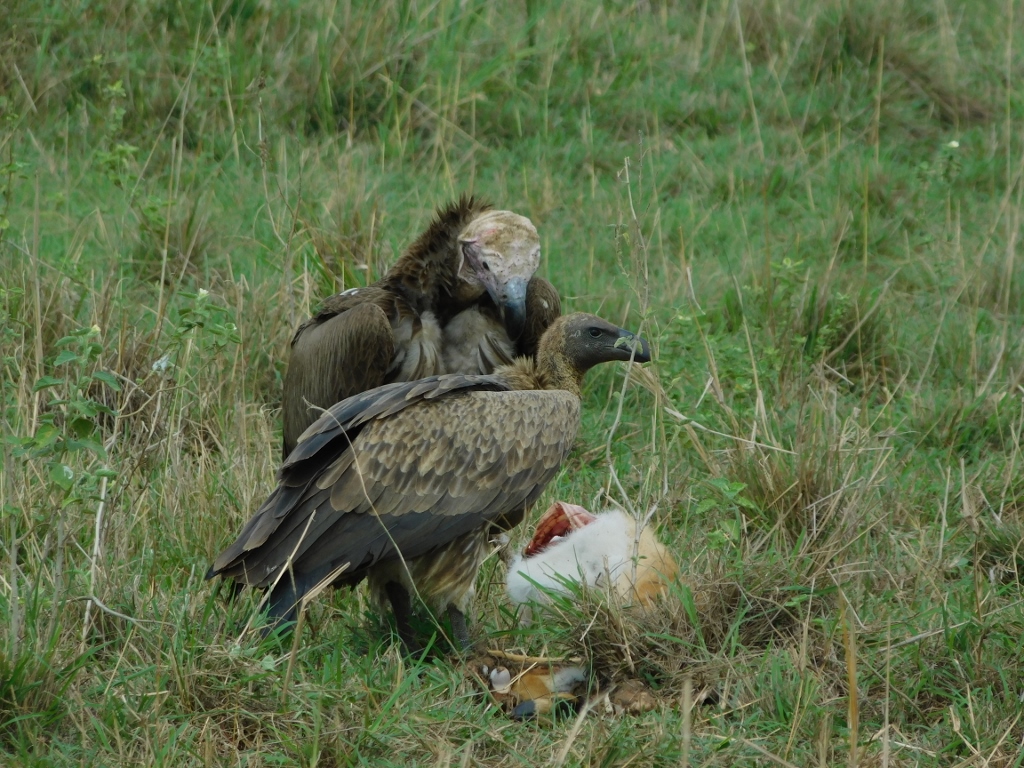 Lappet-faced vulture and white-backed vulture
Lappet-faced vulture and white-backed vulture
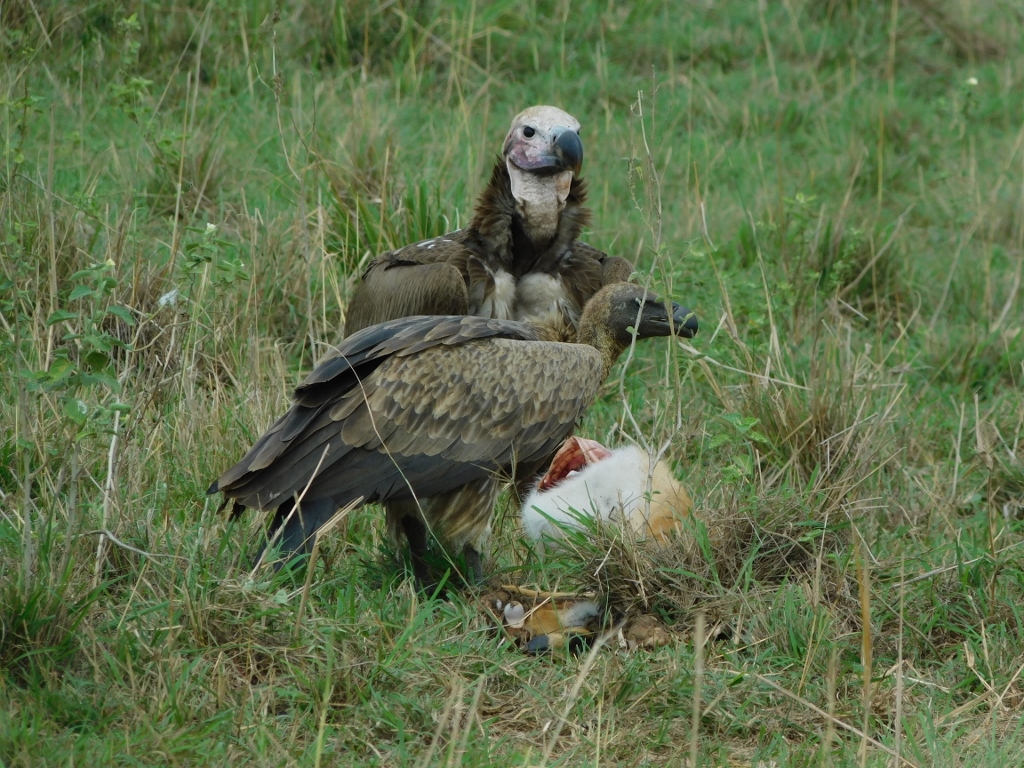 Lappet-faced vulture and white-backed vulture
Lappet-faced vulture and white-backed vulture
Since I felt I had taken enough photos of those two birds, I returned to the ones on "my" side of the road. They had no food, but, likely anticipating some remains of the antelope, they posed quite patiently. They were magnificent.
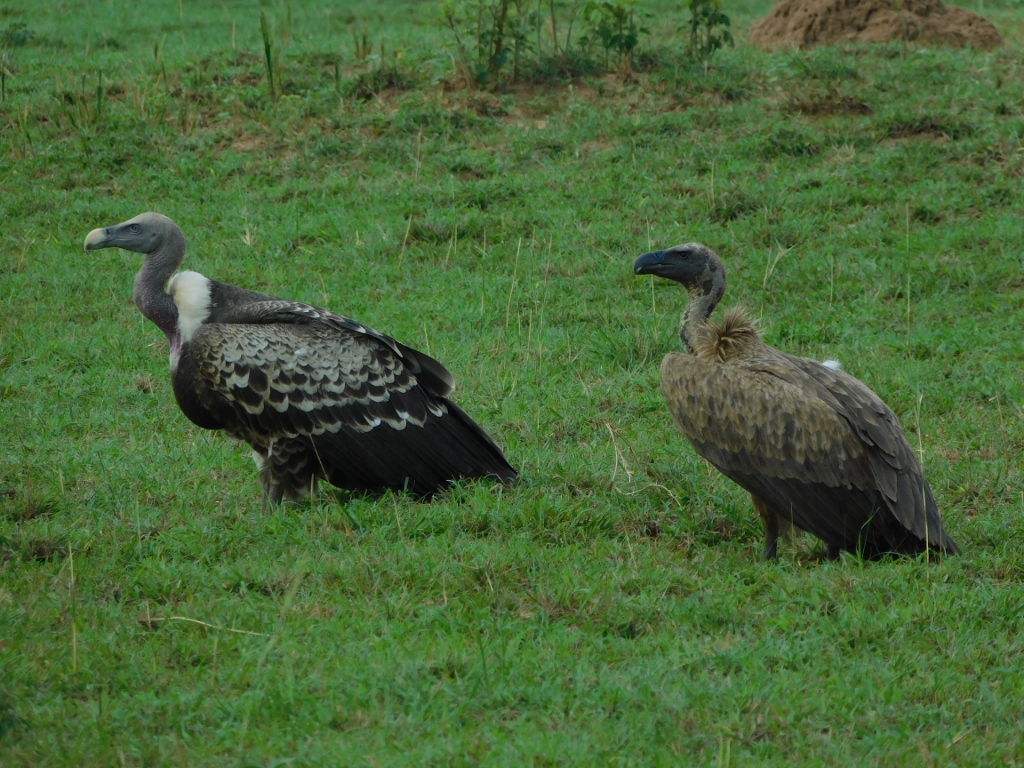 Rueppell's griffon and white-backed vulture
Rueppell's griffon and white-backed vulture
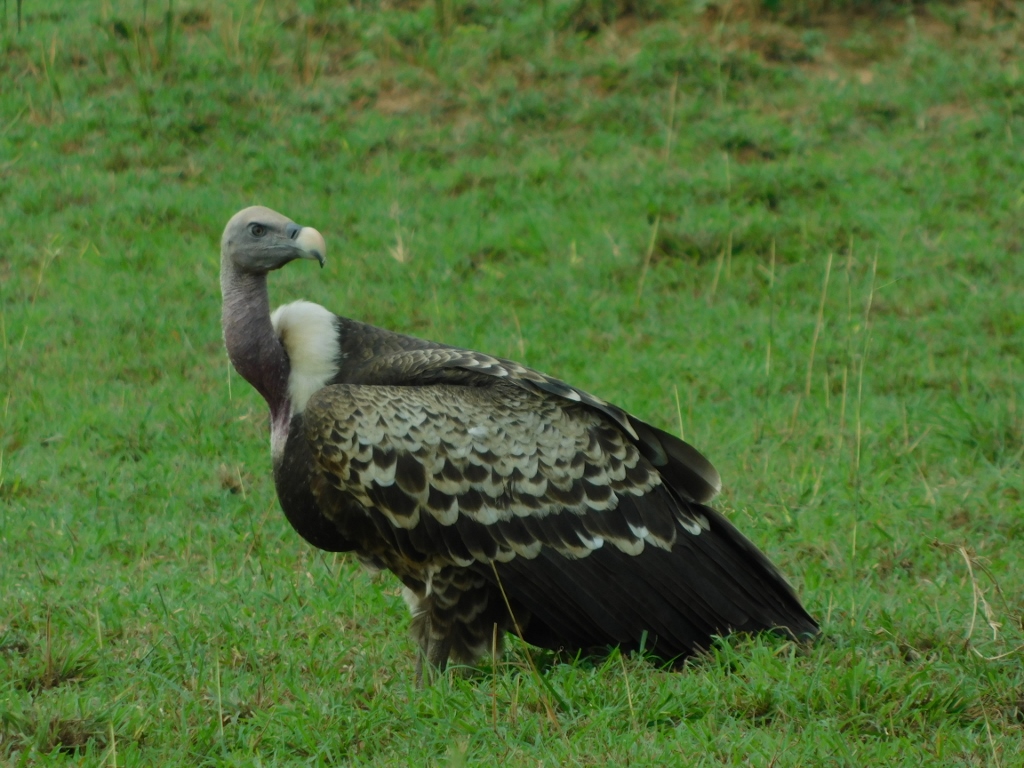 Rueppell's griffon
Rueppell's griffon
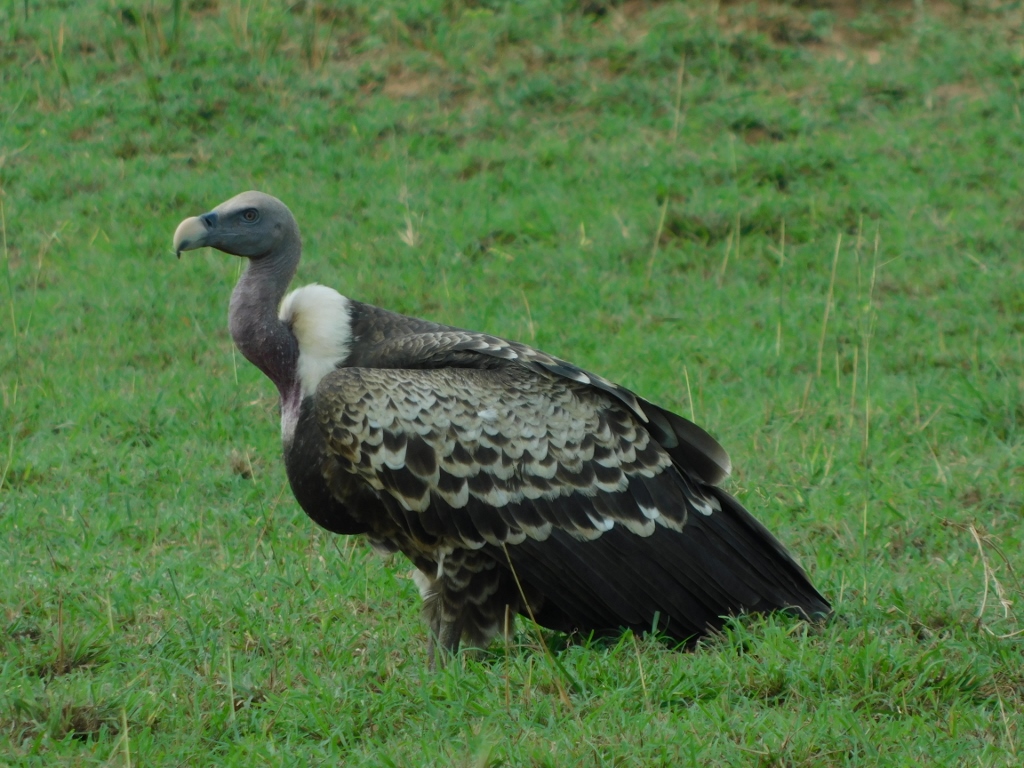 Rueppell's griffon
Rueppell's griffon
We continued driving through the national park and in some areas the grass was quite tall.
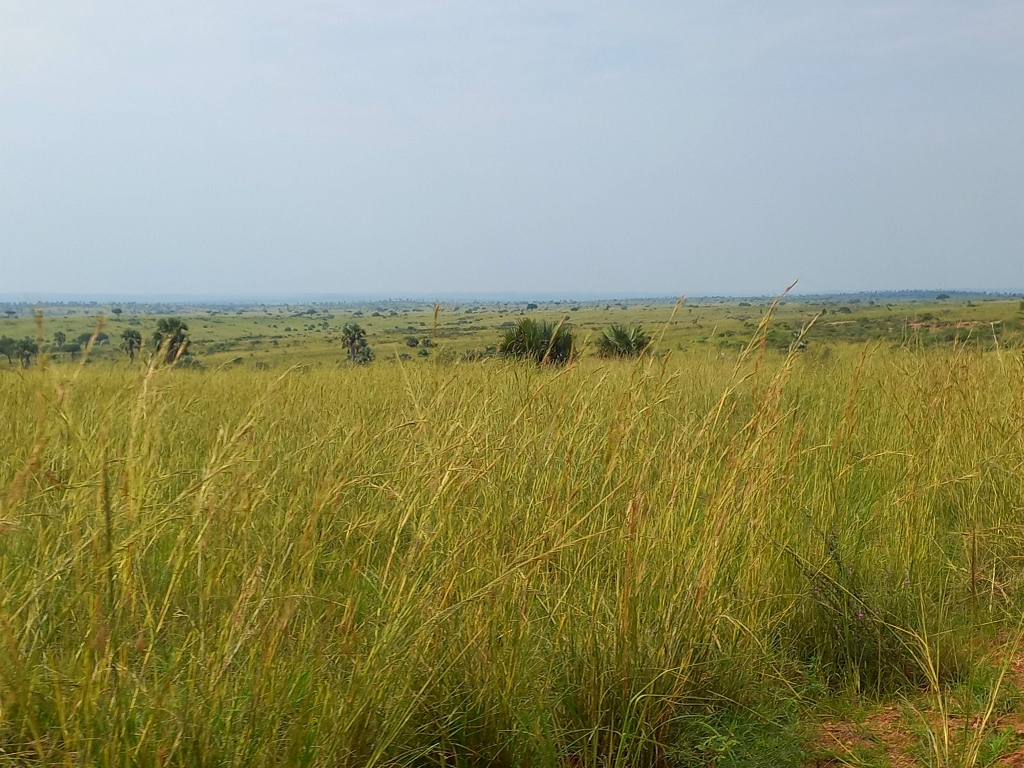 Merchison Falls NP, a detail
Merchison Falls NP, a detail
It was so tall that in several places only the tops of the horns of Lelwel hartebeests or Jackson's hartebeests (Alcelaphus buselaphus lelwel) were visible. However, it was clear that these antelopes were lying down rather than standing. I mean, the grass wasn’t actually 2 meters high.
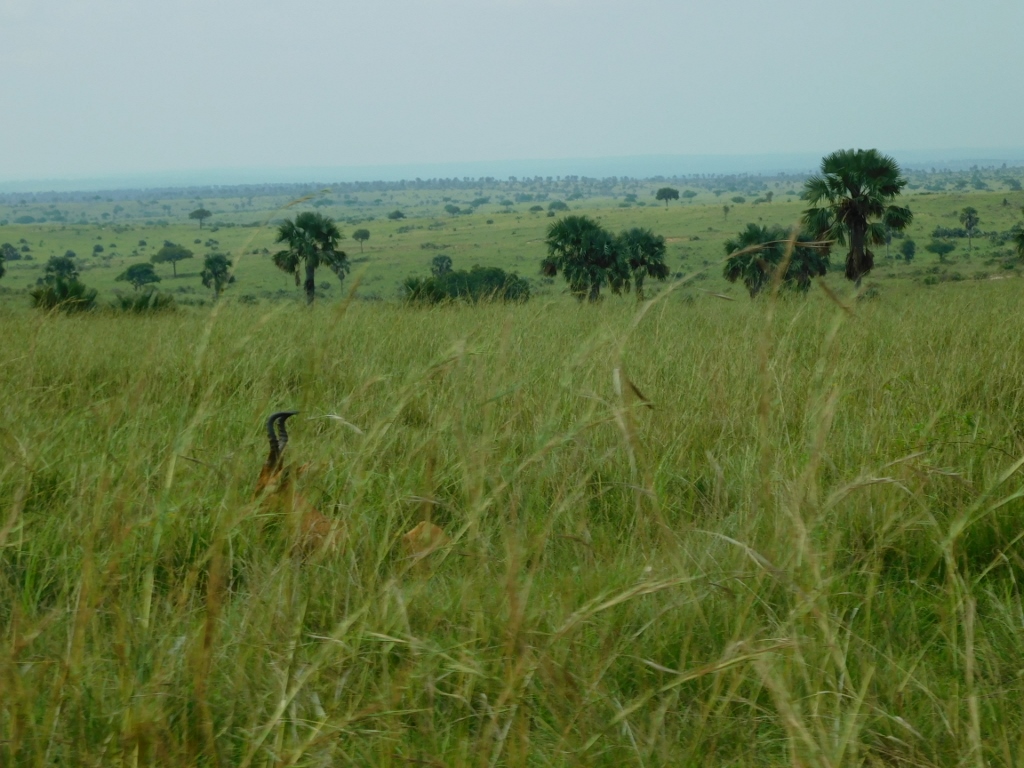 Merchison Falls NP, a detail
Merchison Falls NP, a detail
Some animals, like the oribi (Ourebia ourebi), a small antelope species, wouldn’t be visible in the grass even if they were standing.
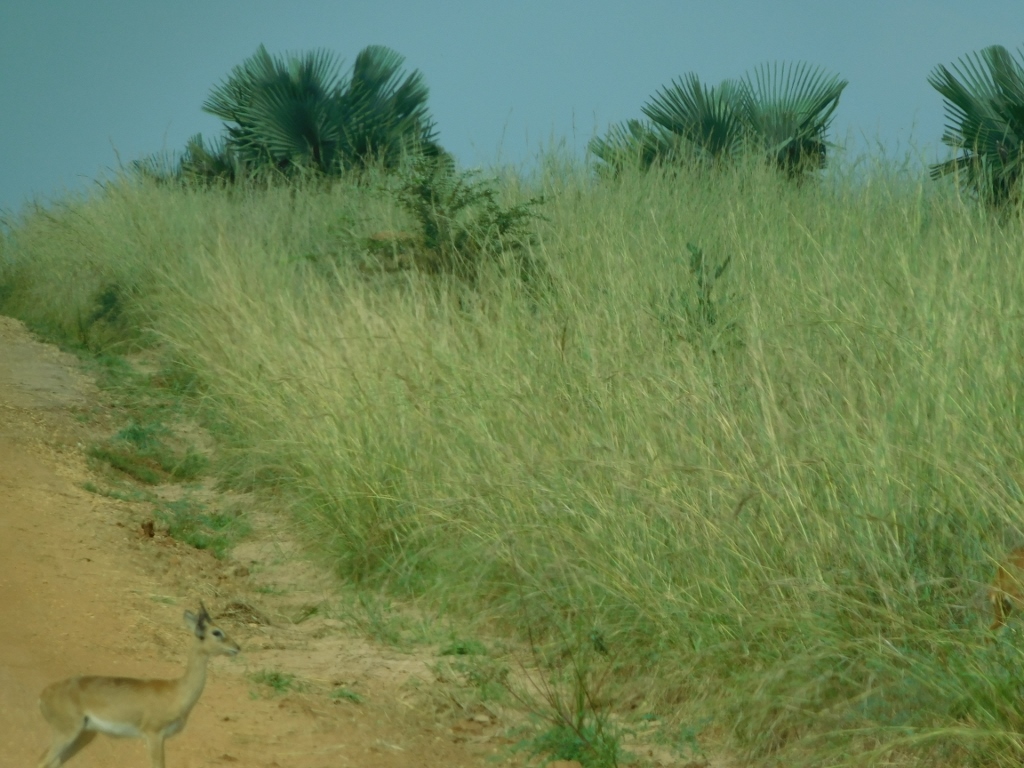 Merchison Falls NP, a detail
Merchison Falls NP, a detail
Then our outstanding guide told the driver to stop and used her binoculars to check if she was correct and if something significant could be seen in the canopy of a tree far ahead. It was during my previous visit to Murchison Falls National Park that she had spotted a leopard in a tree canopy from a considerable distance (see: https://www.svudapodji.com/en/uganda-2/).
This time, she spotted a large cat in the tree canopy again, but it was a lioness (Panthera leo)!!!
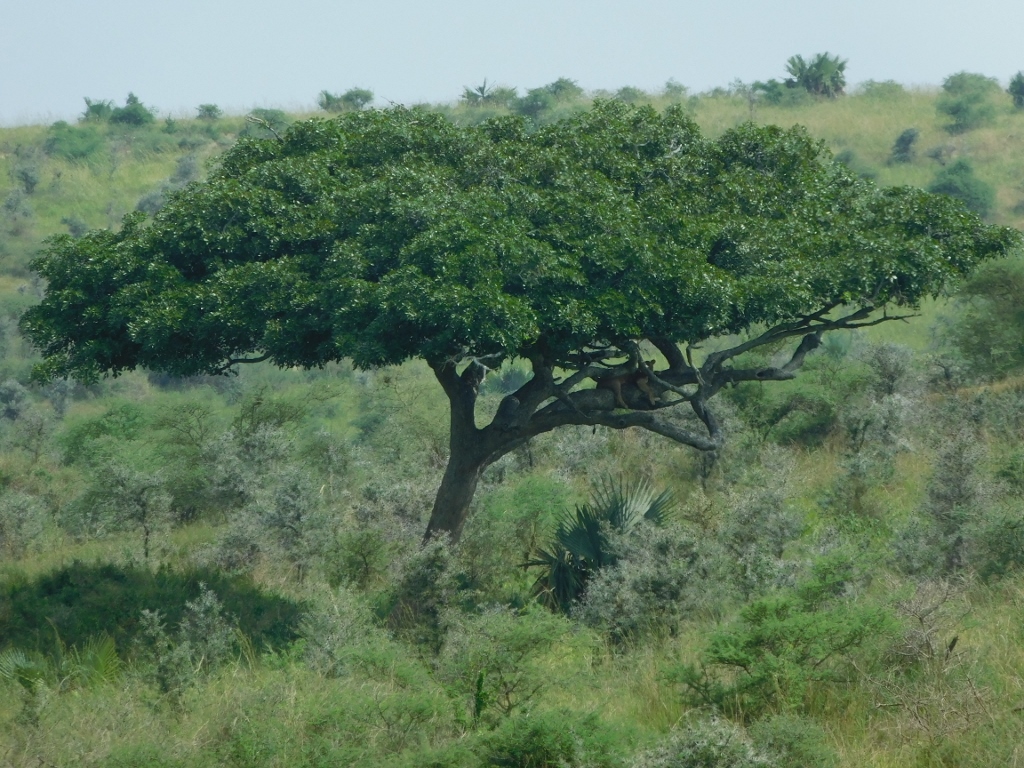 Lioness in a treetop in the Merchison Falls NP
Lioness in a treetop in the Merchison Falls NP
During one of their previous visits to Murchison Falls National Park, some of my colleagues encountered a lioness that even passed just a few metres away from them. However, apart from that encounter and the distant leopard sighting in 2023, large cats had completely eluded us. Now, although from a great distance, we could see a lioness resting unusually in the canopy of a tree.
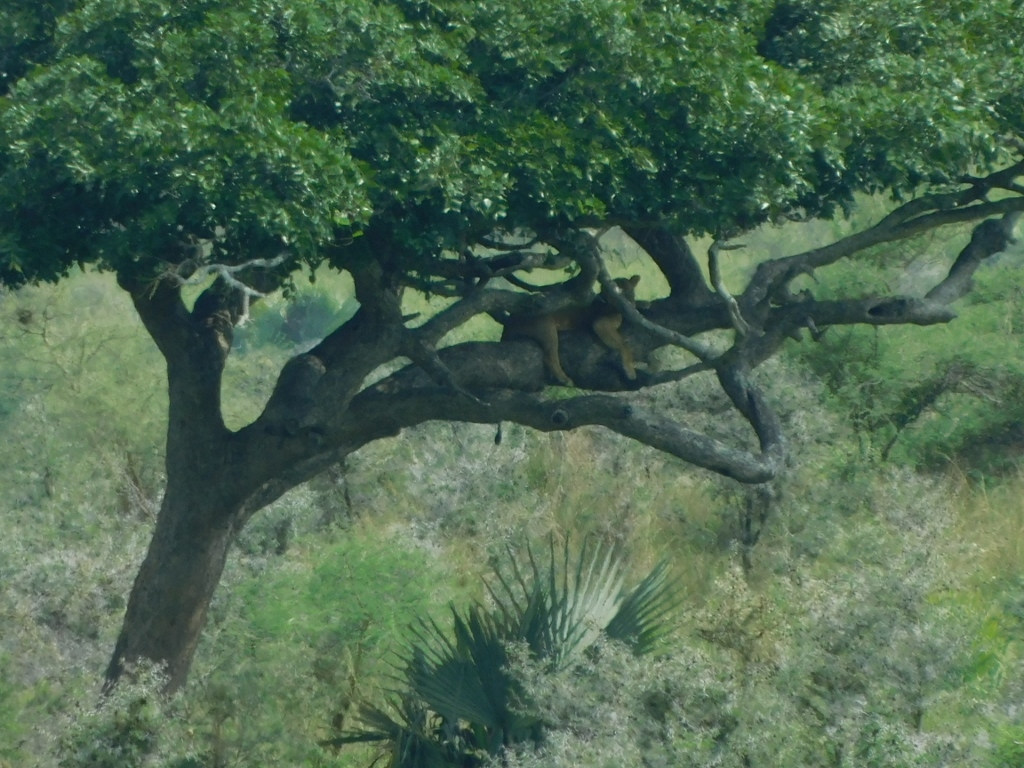 Lioness in a treetop in the Merchison Falls NP
Lioness in a treetop in the Merchison Falls NP
Unlike leopards, lions typically do not climb trees. The main reason is that they are too heavy and their claws are not strong enough to support that weight at greater heights. However, as our guide mentioned, a few years ago a lioness was observed climbing a tree in the park and it seems that now some other lions are doing the same.
Tree-climbing lions are not entirely unknown in Uganda. From what I've read, they are found in Queen Elizabeth National Park in the west of the country. It is believed that lions started doing this in order to avoid pesky insects that trouble them on the ground, or to have a better view of potential prey, especially when the grass is very tall, or to rest and cool off since the temperature is lower in the canopy than on the ground.
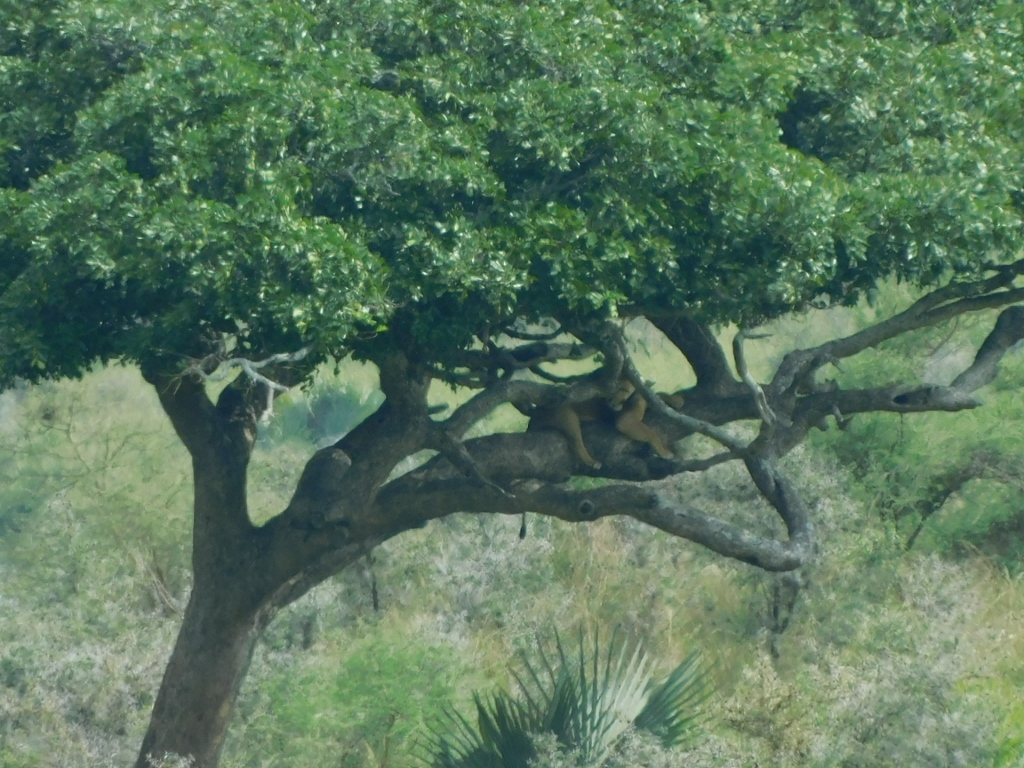 Lioness in a treetop in the Merchison Falls NP
Lioness in a treetop in the Merchison Falls NP
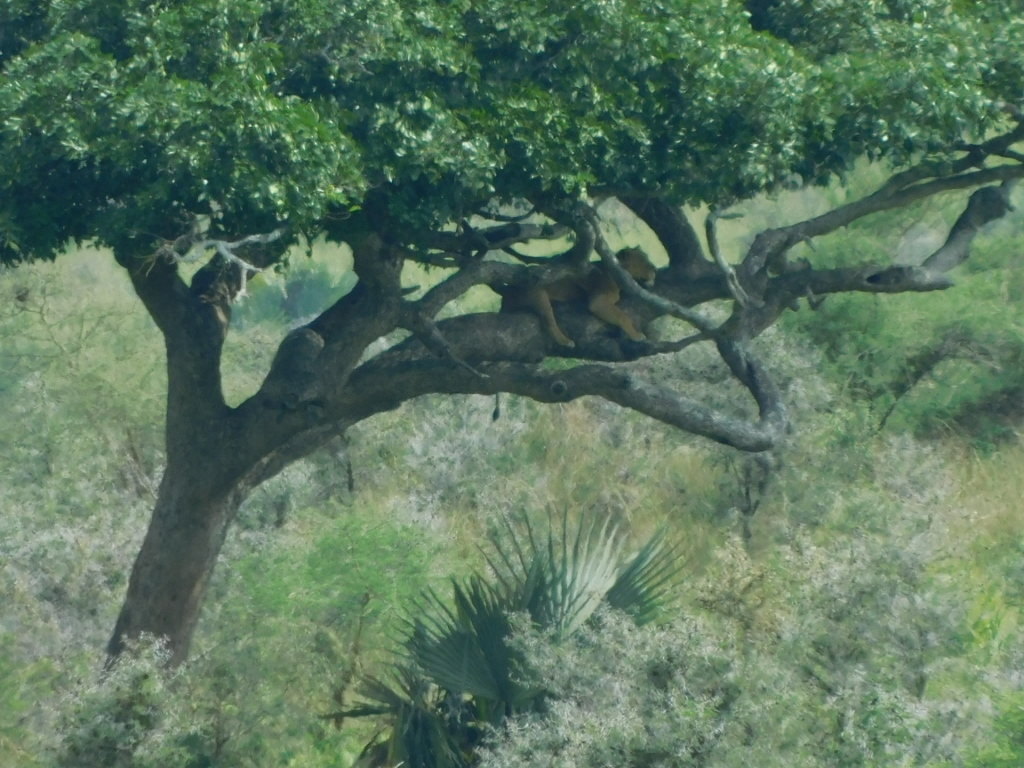 Lioness in a treetop in the Merchison Falls NP
Lioness in a treetop in the Merchison Falls NP
Be as it may, we stayed here for a while and I zoomed in on the lioness with my camera as much as I could.
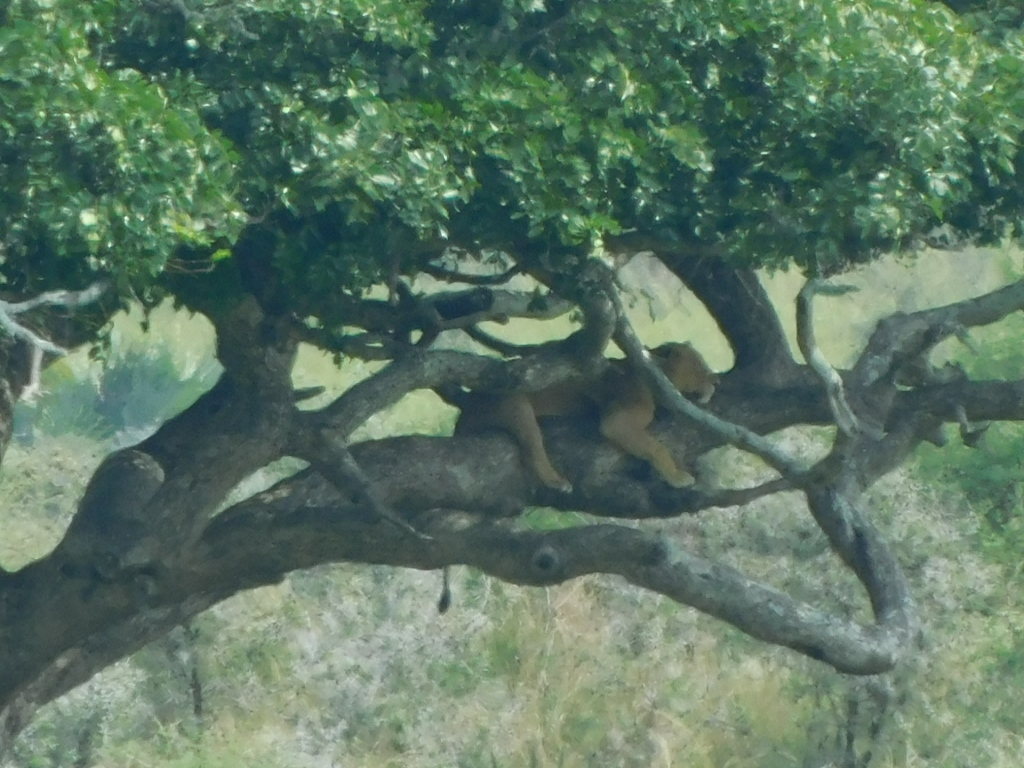 Lioness in a treetop in the Merchison Falls NP
Lioness in a treetop in the Merchison Falls NP
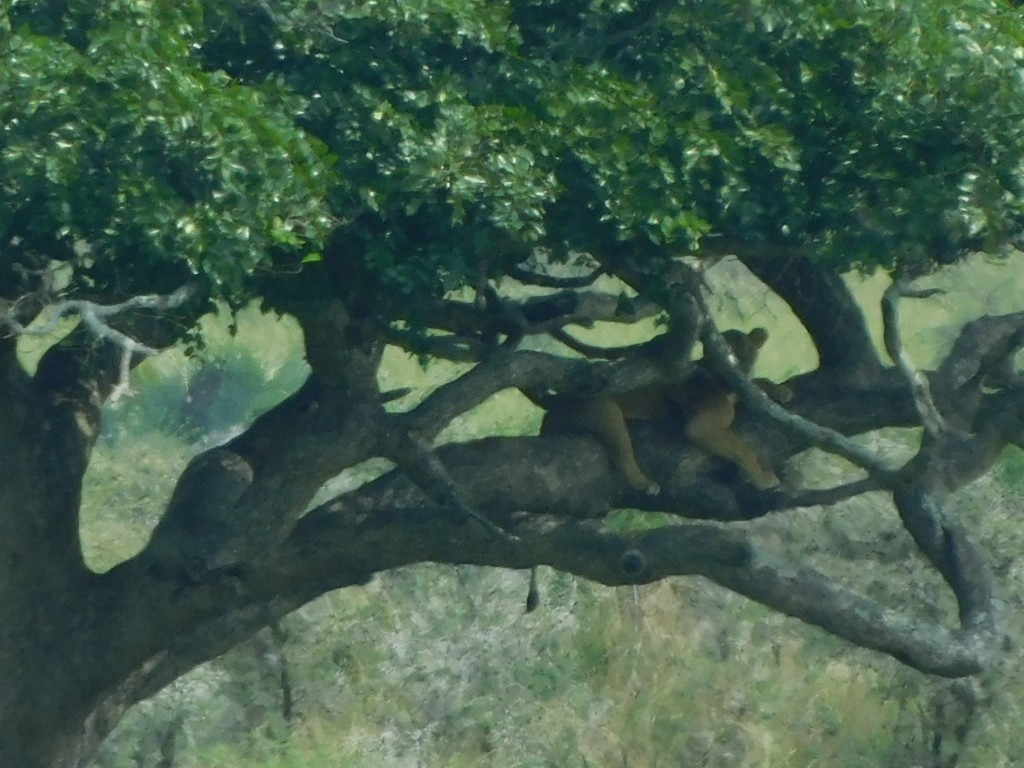 Lioness in a treetop in the Merchison Falls NP
Lioness in a treetop in the Merchison Falls NP
I also recorded her in video format, but apart from the distance, a major issue was that the vehicle's engine was running, which added extra shaking to both me and the camera. Nevertheless, I’m happy – this is indeed a very unique memory.
A little later, we passed by a solitary Lelwel hartebeest (Alcelaphus buselaphus lelwel) and we stopped briefly. It first watched its own shadow and then moved and looked at us.
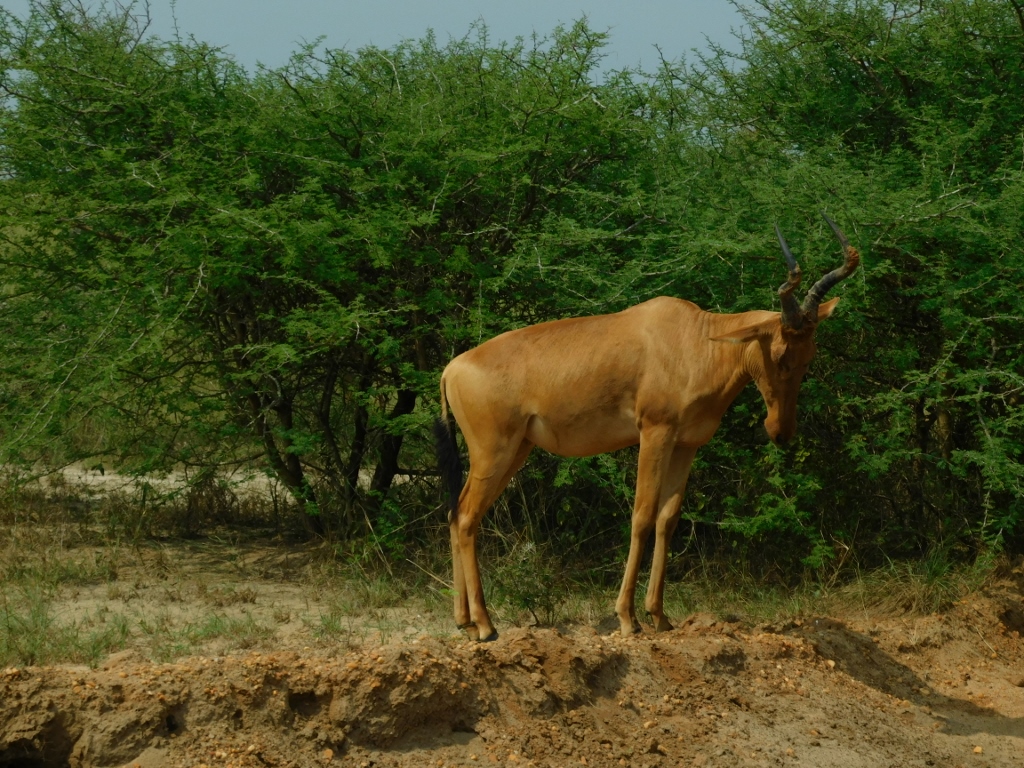 Lelwel hartebeest
Lelwel hartebeest
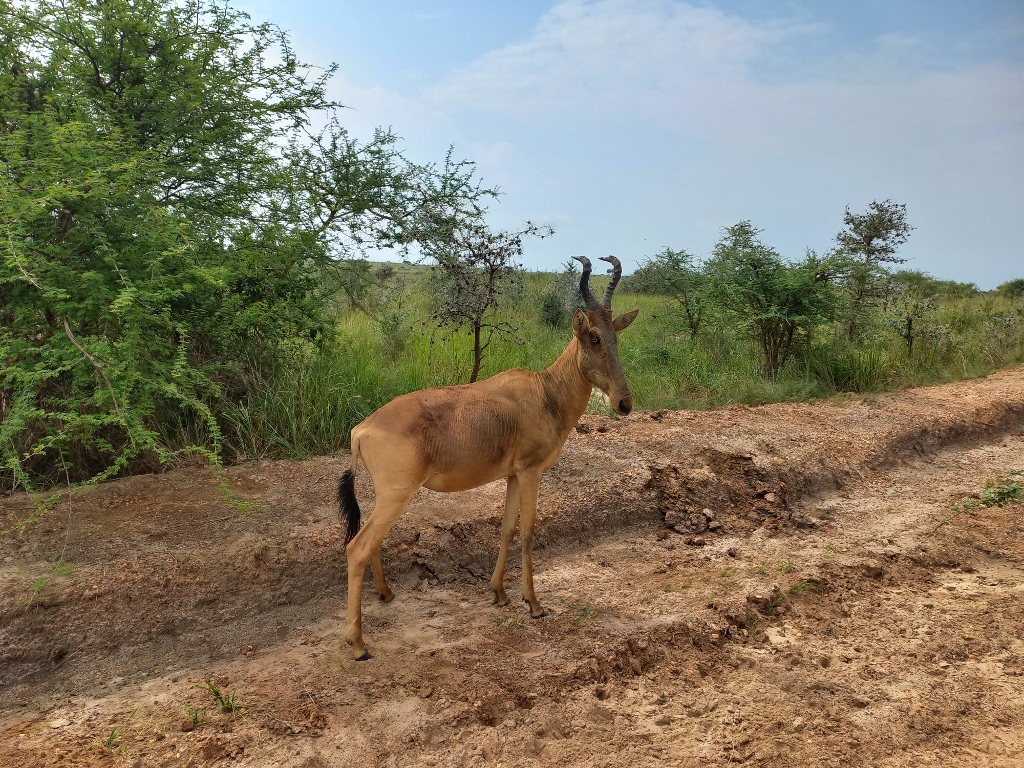 Lelwel hartebeest
Lelwel hartebeest
There were, of course, numerous Ugandan kobs (Kobus kob thomasi) and after a while we returned to the main asphalt road, from where we could see the Victoria Nile in the distance.
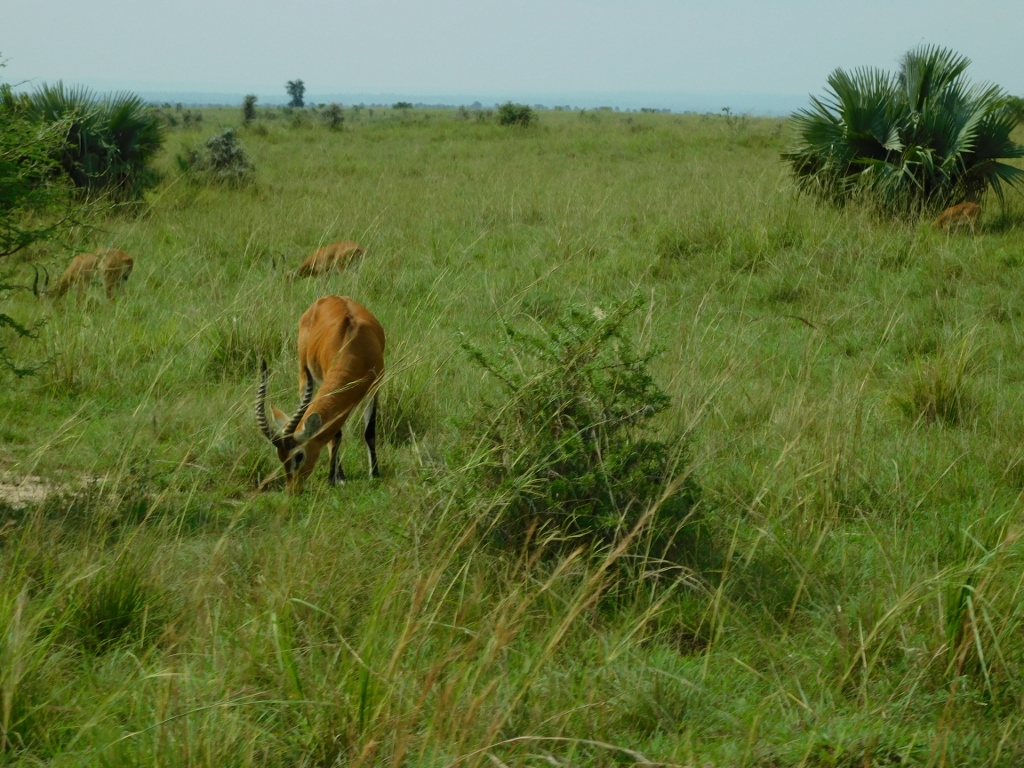 Ugandan kobs
Ugandan kobs
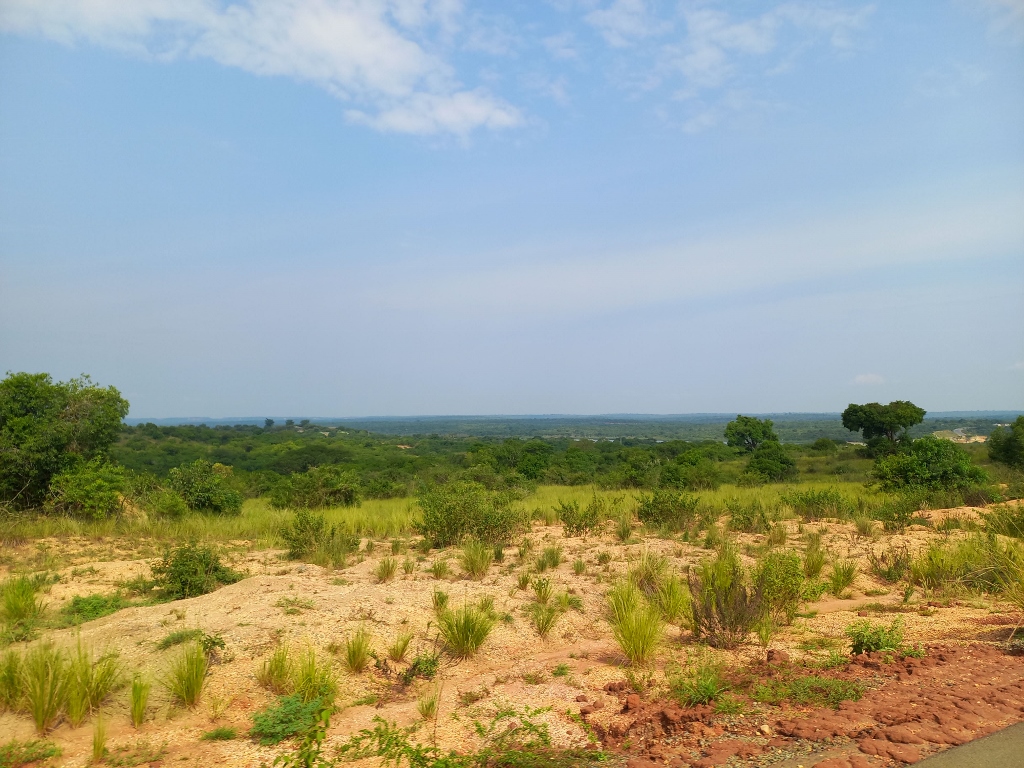
Merchison Falls NP, a detail
But our encounters with animals were not over. Again, near the main road but in a different spot than at the beginning, we saw a herd of African bush elephants (Loxodonta africana). They were accompanied by birds called piapiacs (Ptilostomus afer) and there were also quite a few antelopes visible relatively close to the elephants.
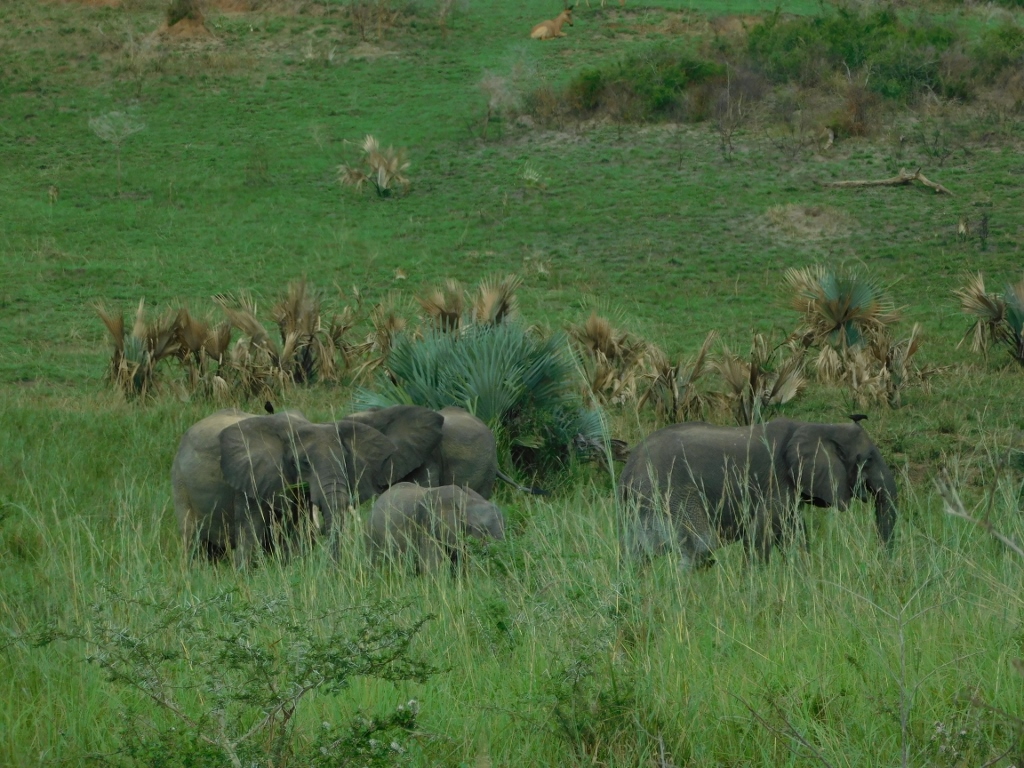 African elephants
African elephants
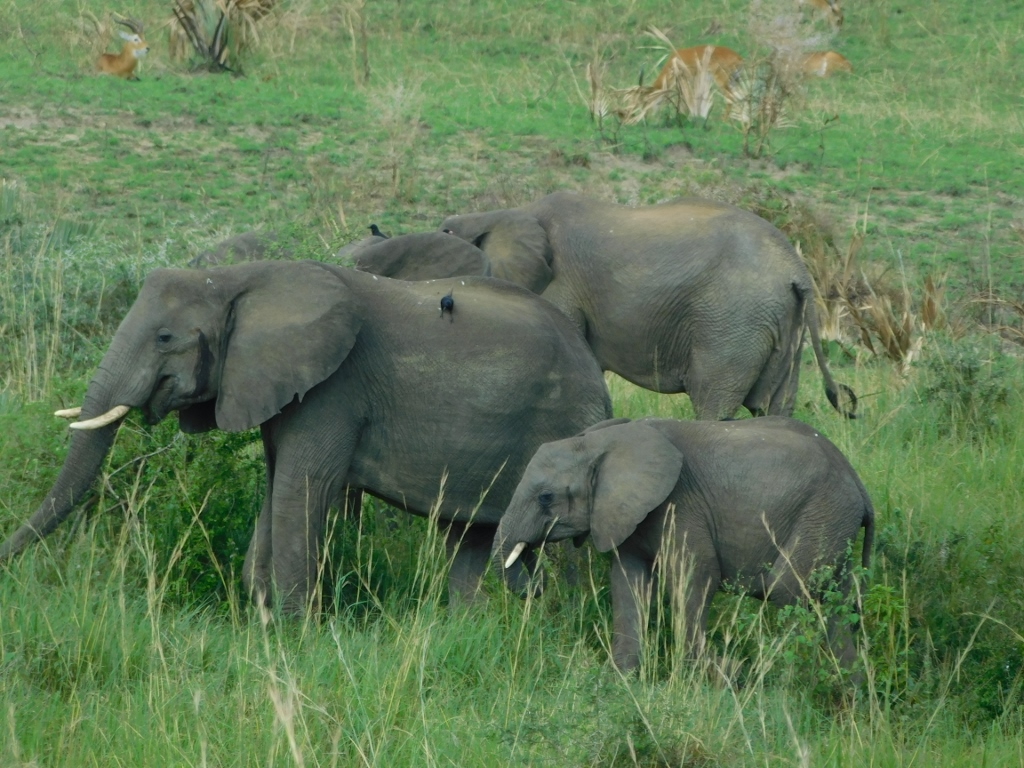 African elephants
African elephants
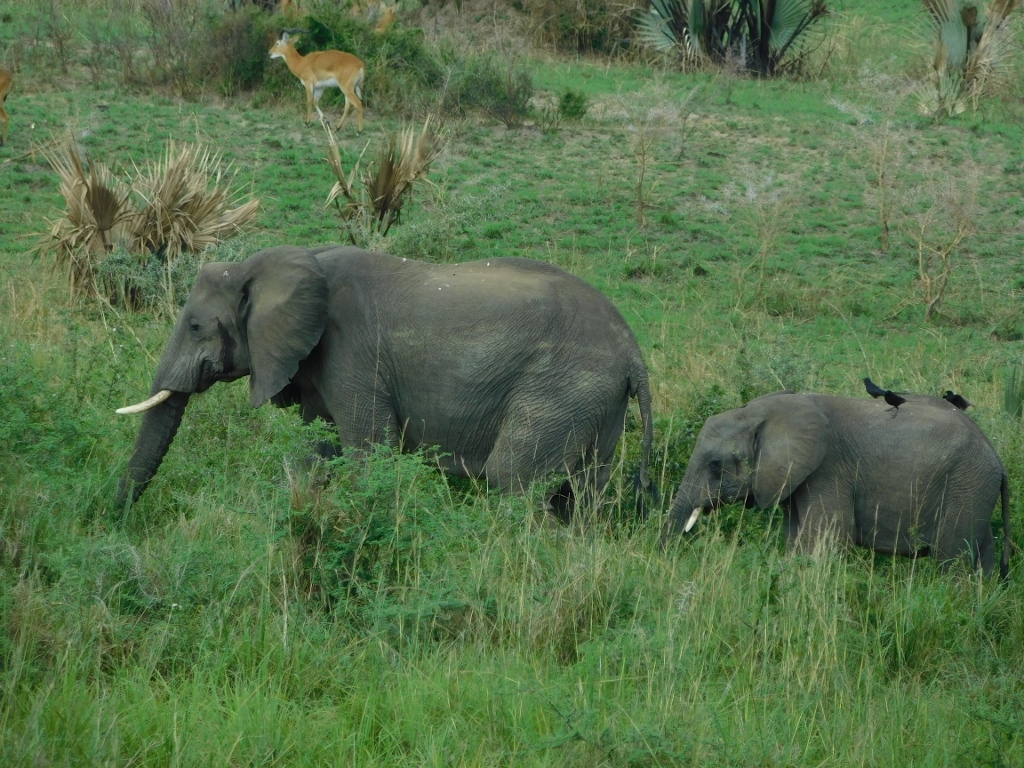 African elephants
African elephants
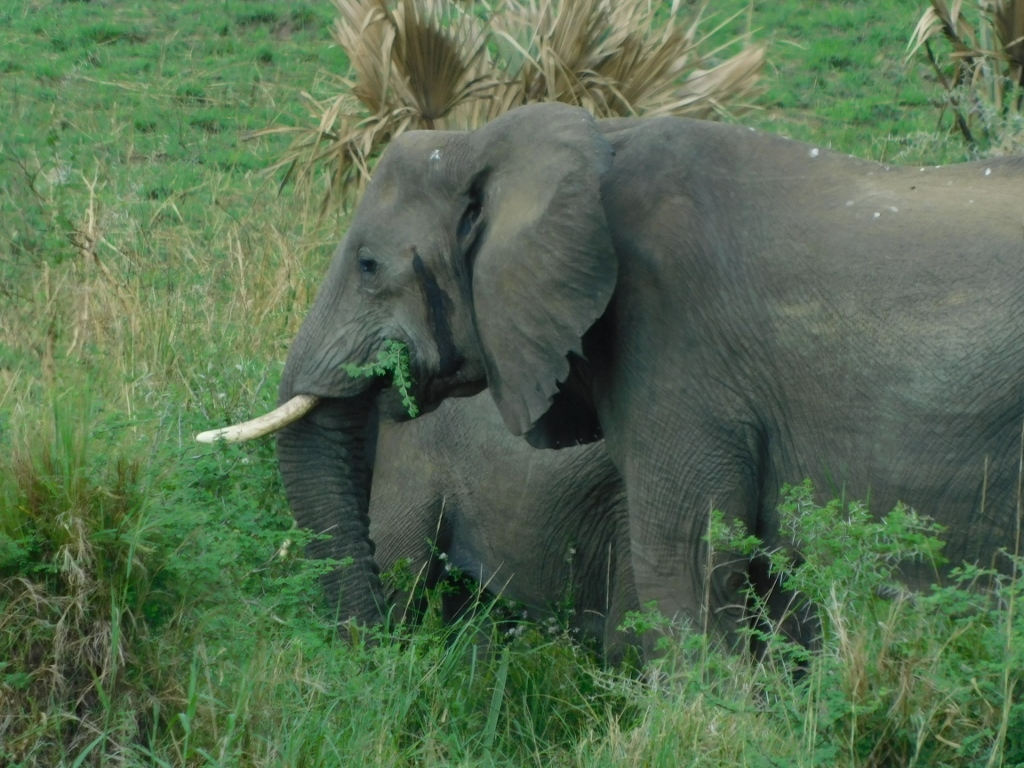 African elephants
African elephants
In addition to the photos, here is also a short video.
Although the excursion was far from over, we had now definitely started heading back towards Masindi. First, we needed to cross the Victoria Nile by bridge. This is what it looked like:
Almost immediately after crossing the river, we went to the restaurant within the tourist camp where we had ordered lunch earlier. We were all quite hungry, so it was very nice to eat something. I used the break to photograph a few more animals living in the area. Again, they were mostly birds – a pair of black-headed weavers (Ploceus melanocephalus), a black-headed gonolek (Laniarius erythrogaster) and a laughing dove (Spilopelia senegalensis).
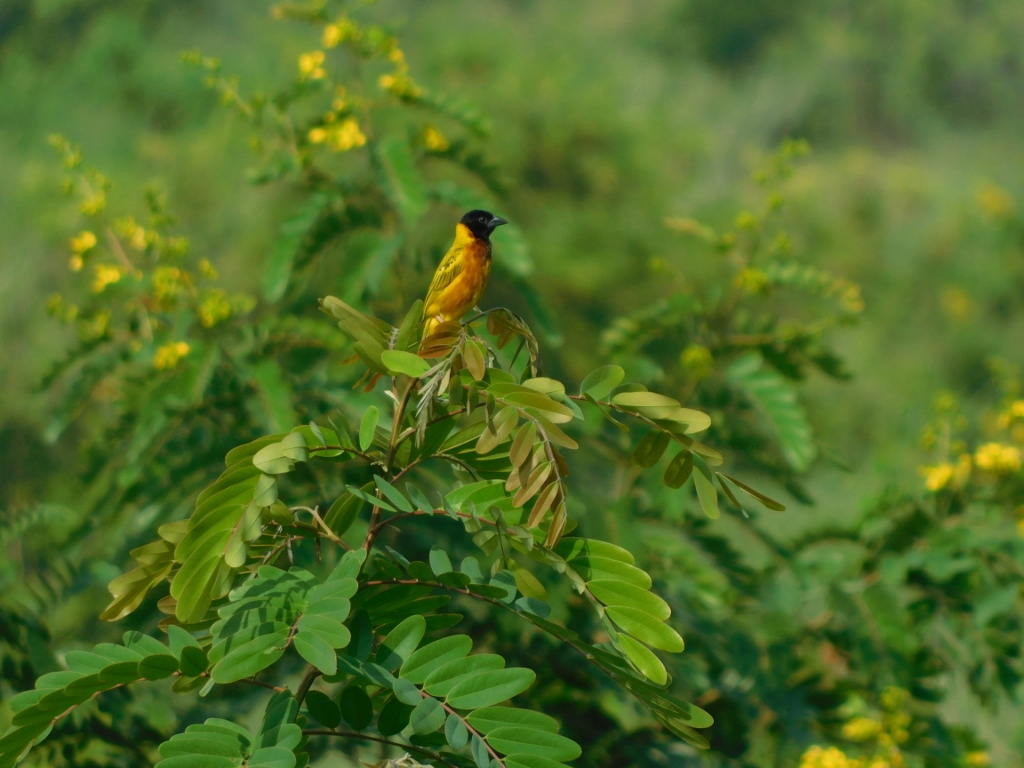 Black-headed weaver
Black-headed weaver
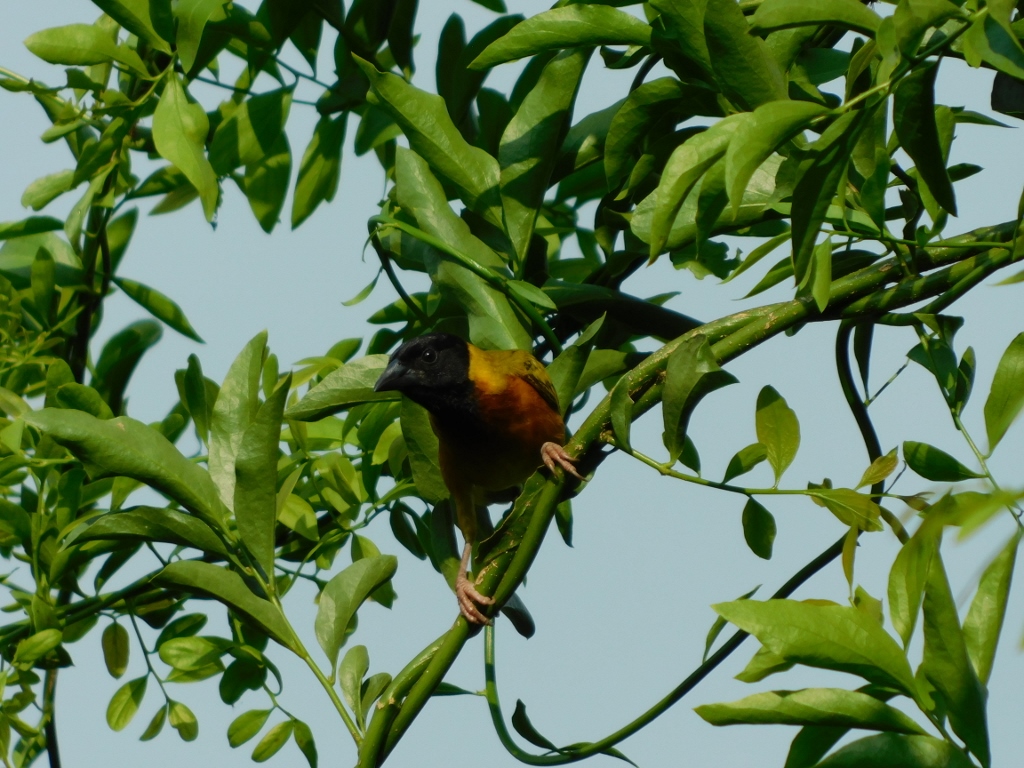 Black-headed weaver
Black-headed weaver
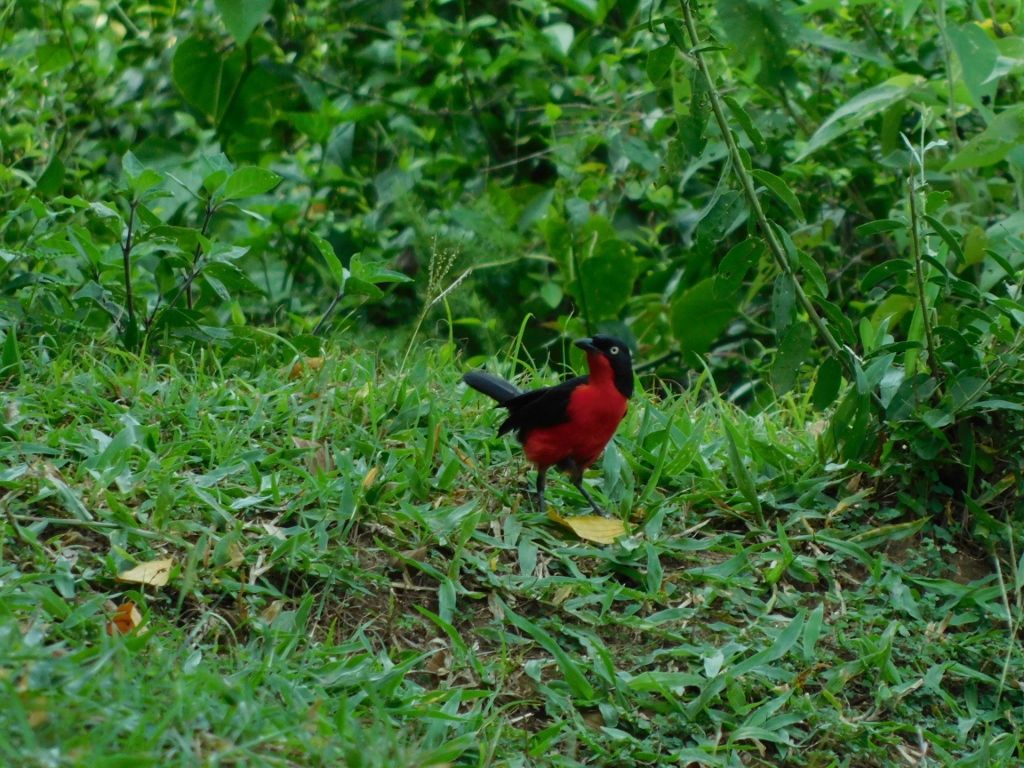 Black-headed gonolek
Black-headed gonolek
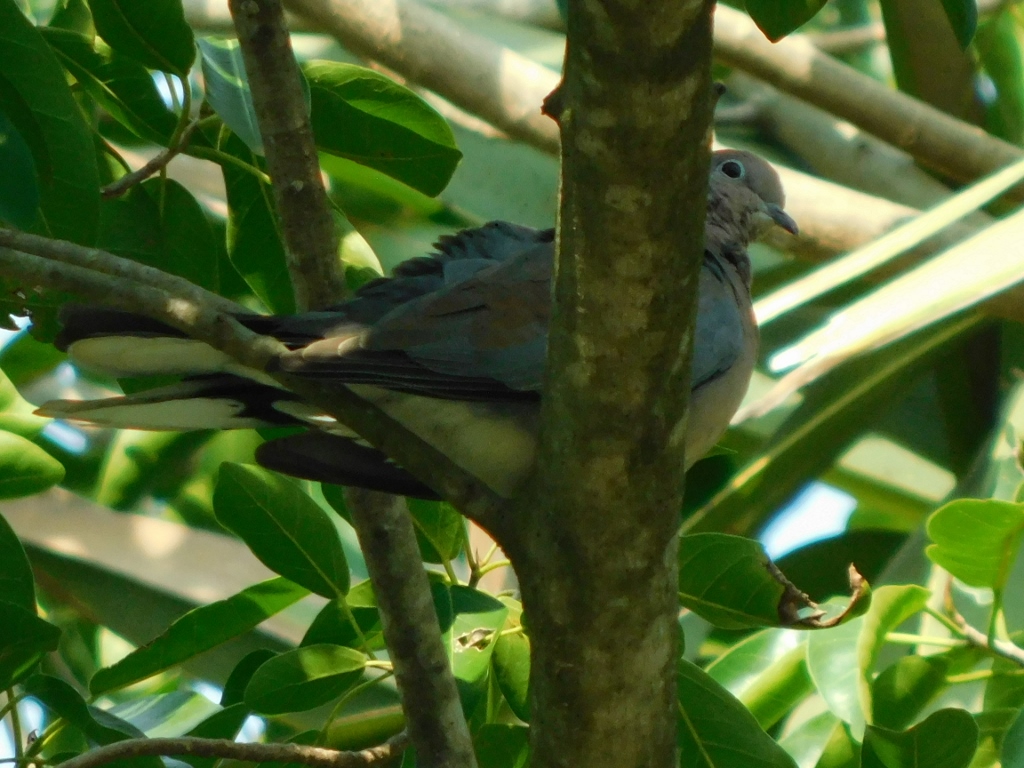 Laughing dove
Laughing dove
There was also a beautiful rainbow agama (Agama agama), while a couple of common warthogs, that seemed to be like domestic animals here, were resting comfortably in the tourist camp's yard.
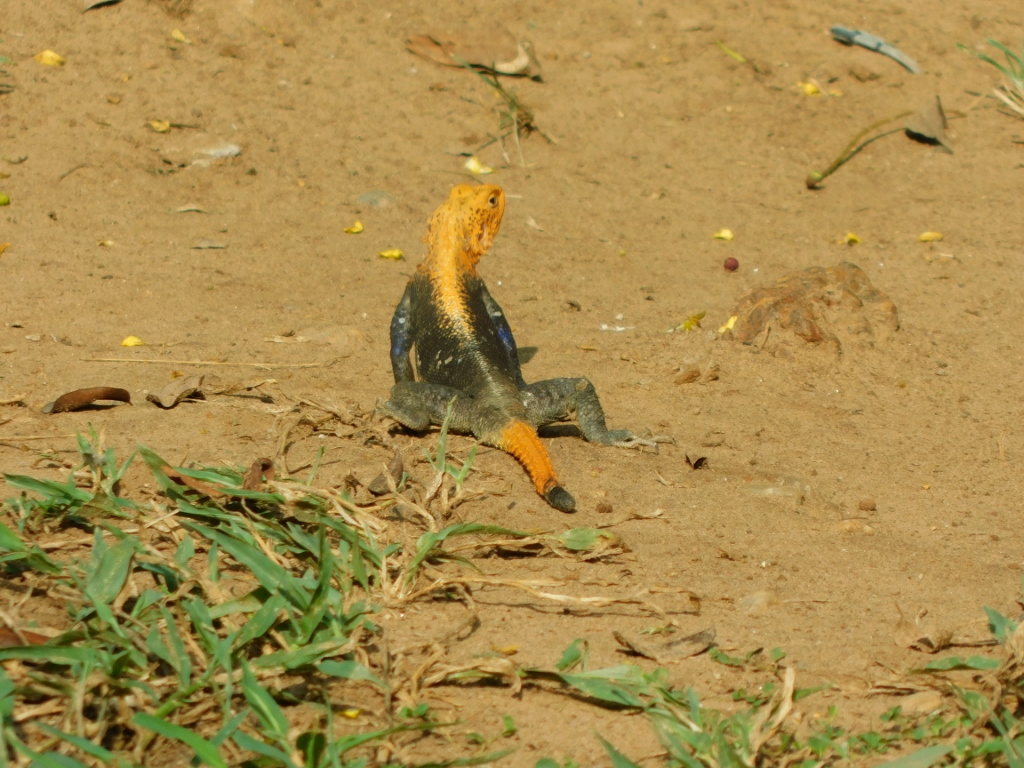 Rainbow agama
Rainbow agama
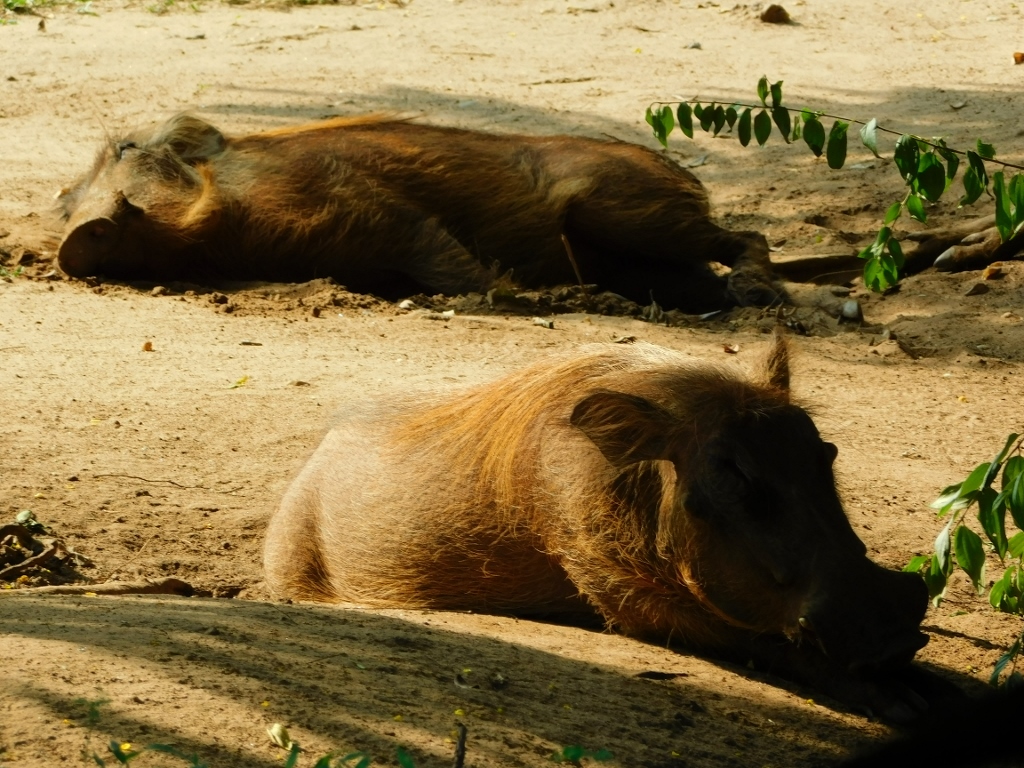 Common warthogs
Common warthogs
Continuing after lunch towards Masindi, we took a detour to visit Murchison Falls on the Victoria Nile, which is part of the White Nile. I had been there a few months earlier, but I was no less impressed this time.
To start with, here is a map showing where I travelled during this trip to Uganda in the summer of 2024:
As for the falls themselves, I have already written in detail about them in the previous stories from Uganda, so I won’t repeat all that here. For those interested, you can check out https://www.svudapodji.com/en/uganda-3/.
What I will reiterate is what primarily characterises these falls. It is not their height, width or size. The unique beauty of Murchison Falls is created by the narrow passage through which the large volume of water flows. The White Nile, which approaches this site at nearly 50 m wide, enters a passage between large rocks that is only 7 m wide (or narrow). The water then drops about 45 m and continues down a narrow gorge that is about 10 m wide. Due to the enormous volume of water forced through such a narrow passage, Murchison Falls is considered the most powerful waterfall in the world.
My second visit to Uganda was after the rainy season, while heavy rains were still occurring. This meant that the river was swollen and there was even more water than the previous autumn. I believe this is best seen in the video consisting of several segments that will be explained through the photographs below.
The visitor path descends from the parking area towards the river and then runs parallel to it.
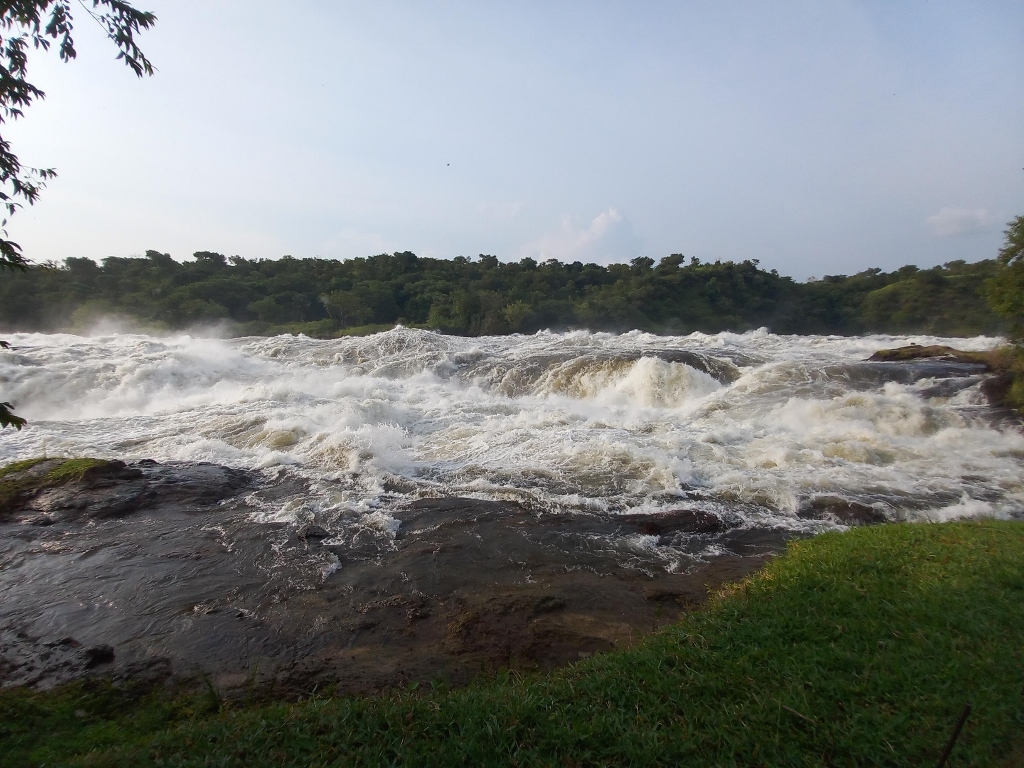 Merchison Falls
Merchison Falls
And the river... well, it reaches the horseshoe-shaped point where the immense volume of water plunges down abruptly.
 Merchison Falls
Merchison Falls
 Merchison Falls
Merchison Falls
Looking upstream, I noticed a nice spot where I wanted to pose for a photo, but I left that for a little later.
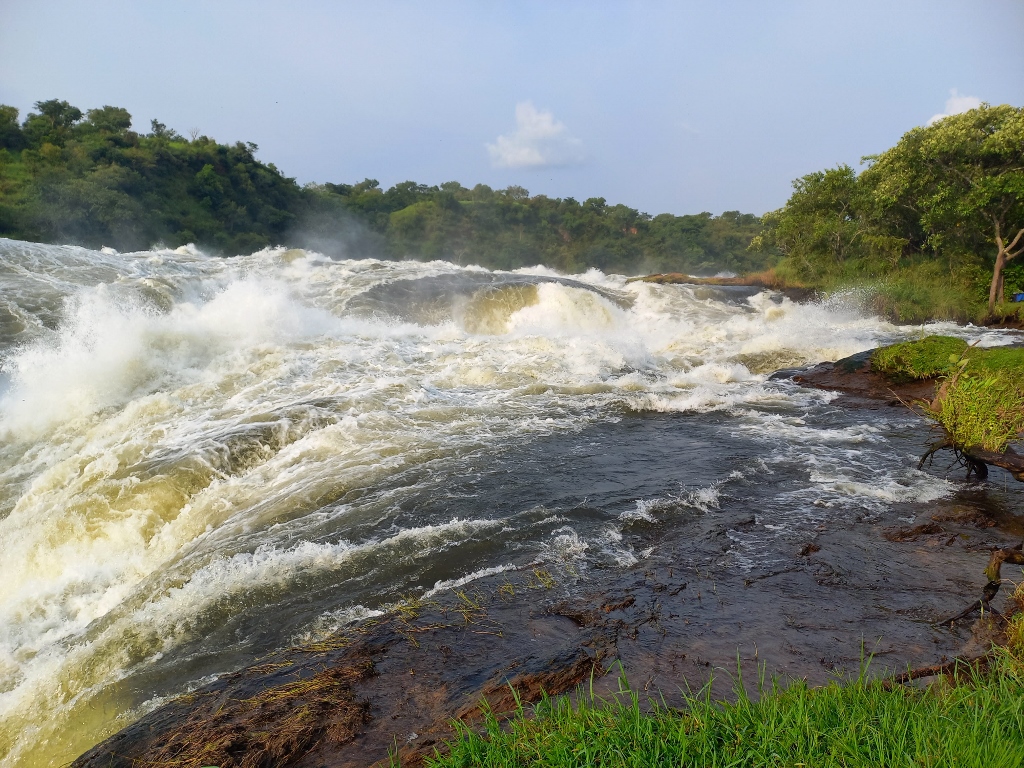 Merchison Falls
Merchison Falls
For the time being, I admired the power of the water mass.
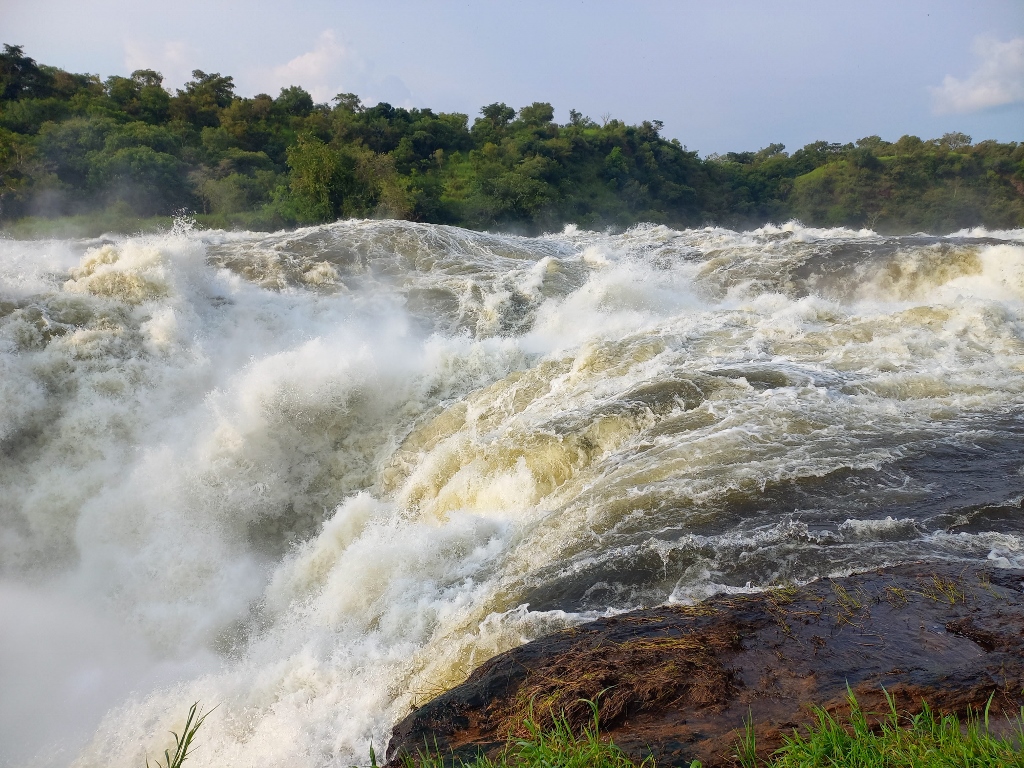 Merchison Falls
Merchison Falls
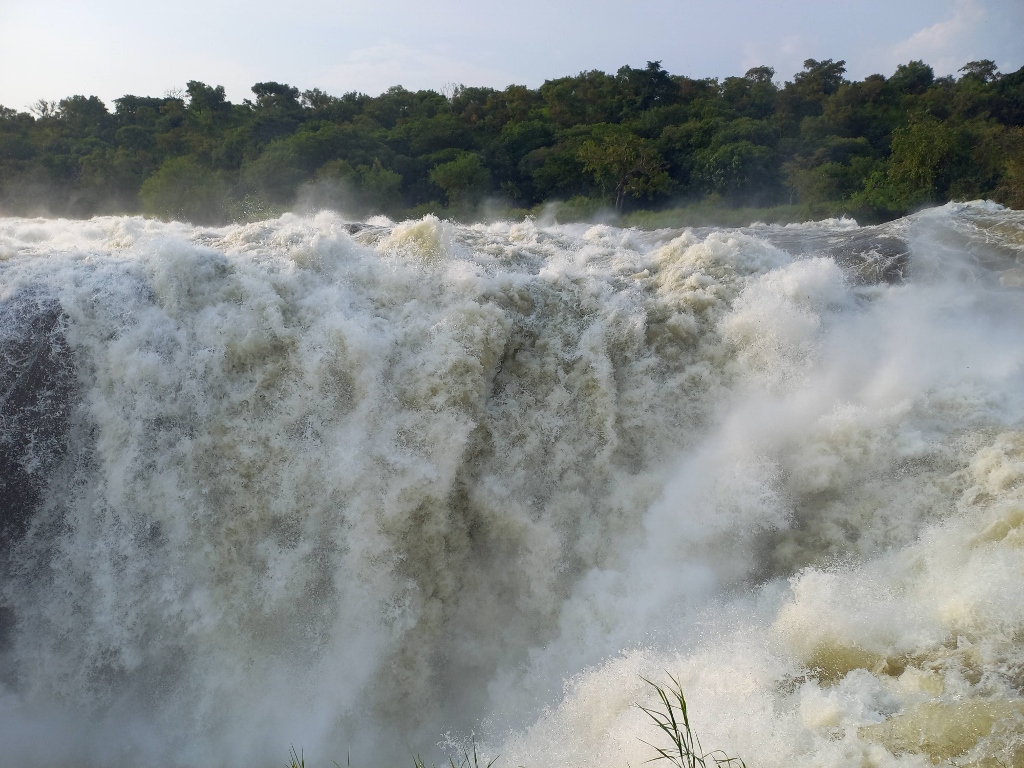 Merchison Falls
Merchison Falls
Since there was a lot of water spray, I put on a light jacket to protect myself, then stood by the railing and took a selfie.
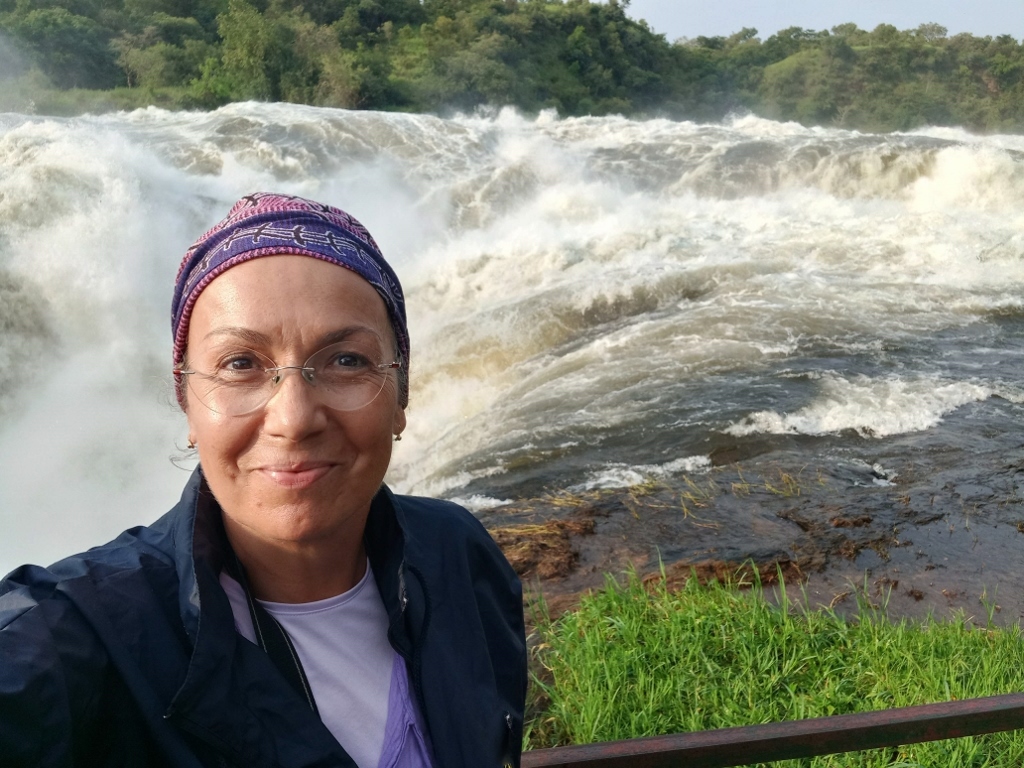 Selfie at Merchison Falls
Selfie at Merchison Falls
Then, from a spot a few metres away, I photographed the viewpoint on the left side of the falls. I had been there on my previous visit and ended up almost completely soaked. The large volume of water falling from a height disperses into tiny droplets that are blown back in the opposite direction from the river’s flow, towards that viewpoint.
Having already experienced this, I only took pictures of the viewpoint, the gorge and the fine droplets. A few colleagues who hadn’t been here before went to the viewpoint, however, and got completely drenched, but they loved the experience. They had to change into dry clothes before getting back into the vehicle. Fortunately, some experienced colleagues had given them good advice to bring spare shirts and pants.
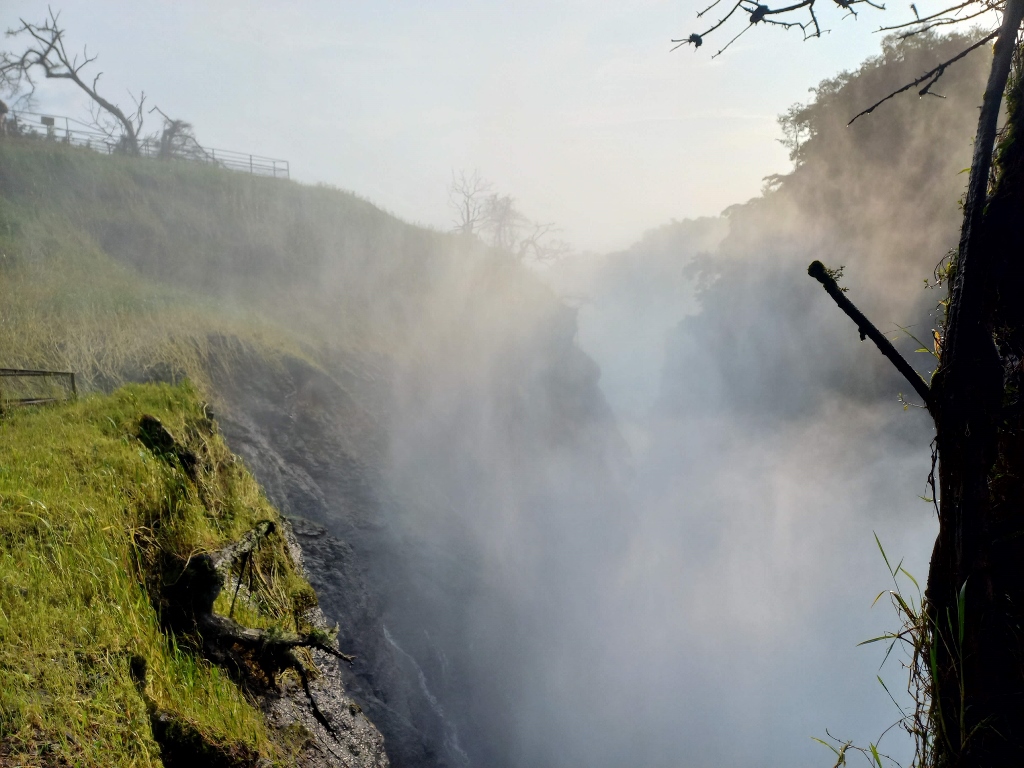 Merchison Falls
Merchison Falls
After this, I returned to the spot I had identified as good for taking photos, but first, I took a few pictures of the river and the falls.
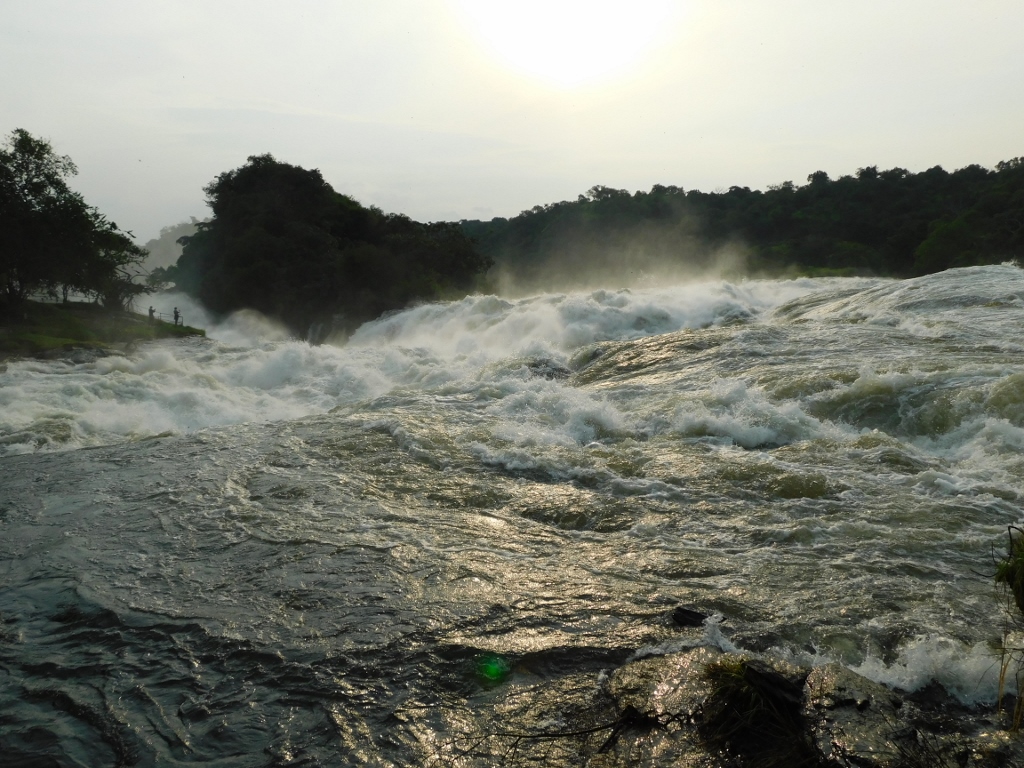 Merchison Falls
Merchison Falls
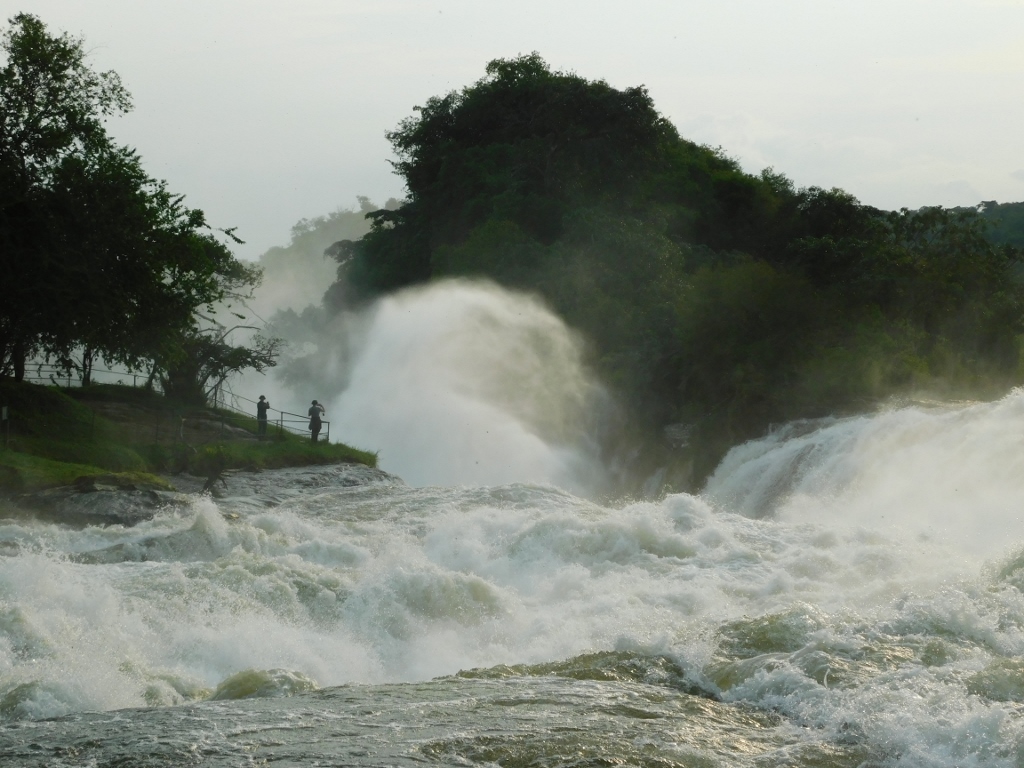 Merchison Falls
Merchison Falls
And then I sat down and struck a pose. It turned out that the sun was behind me, but because of the humidity and the river droplets creating mist, it didn’t ruin the photo by creating harsh contrast; instead, it actually enhanced it.
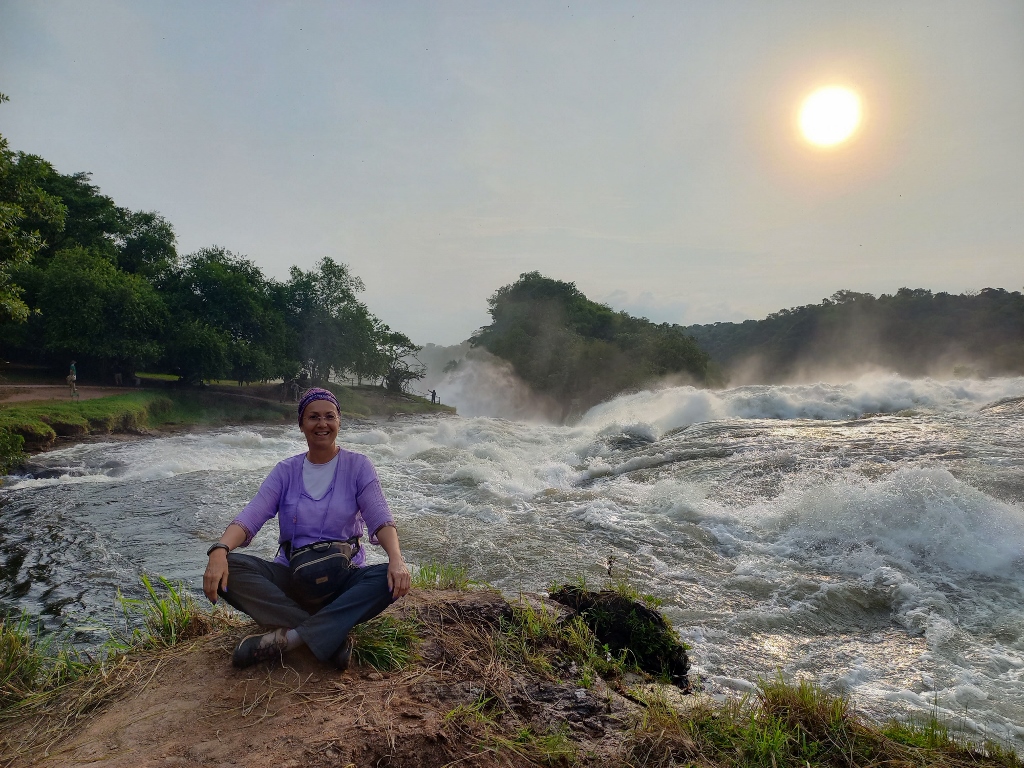 At Merchison Falls
At Merchison Falls
I was very content with the whole day, so in such good spirits, I took another selfie.
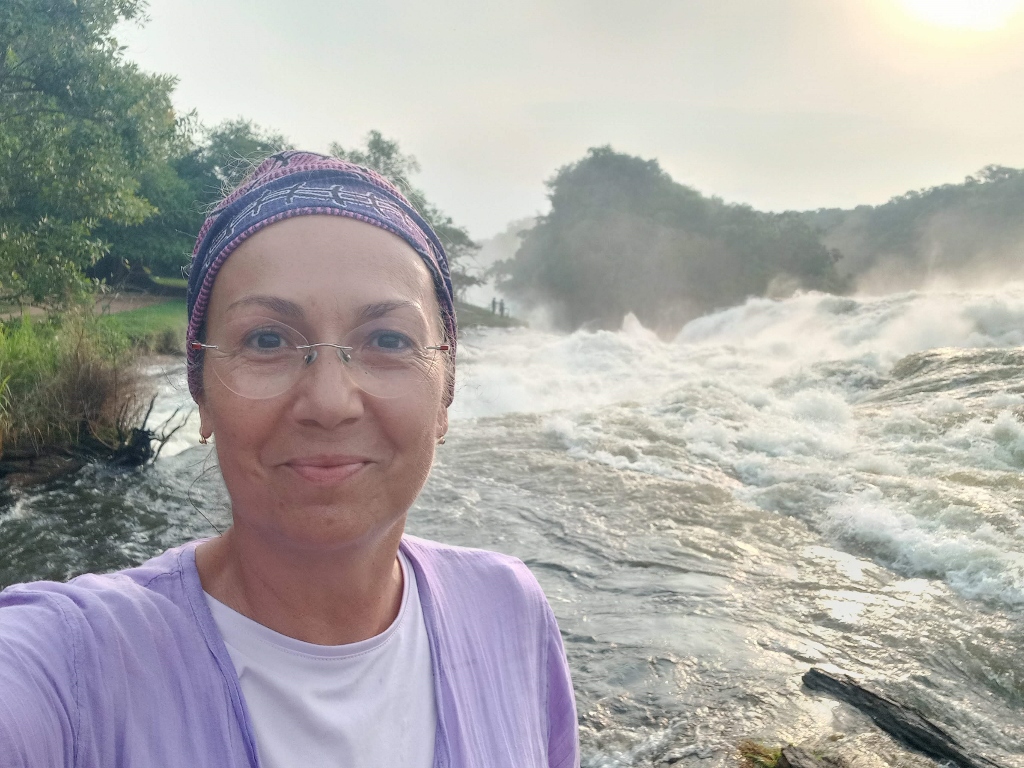 Selfie at Merchison Falls
Selfie at Merchison Falls
I also saw here a lot of smaller "hanging tents" and asked a guard what they were. He explained that these were some sort of contraptions designed to catch mosquitoes by luring them in and then trapping them. Unfortunately, Uganda is known for a high number of malaria cases, so mosquitoes are a significant problem here. The country is clearly making special efforts to control mosquito infestations in areas with higher tourist traffic.
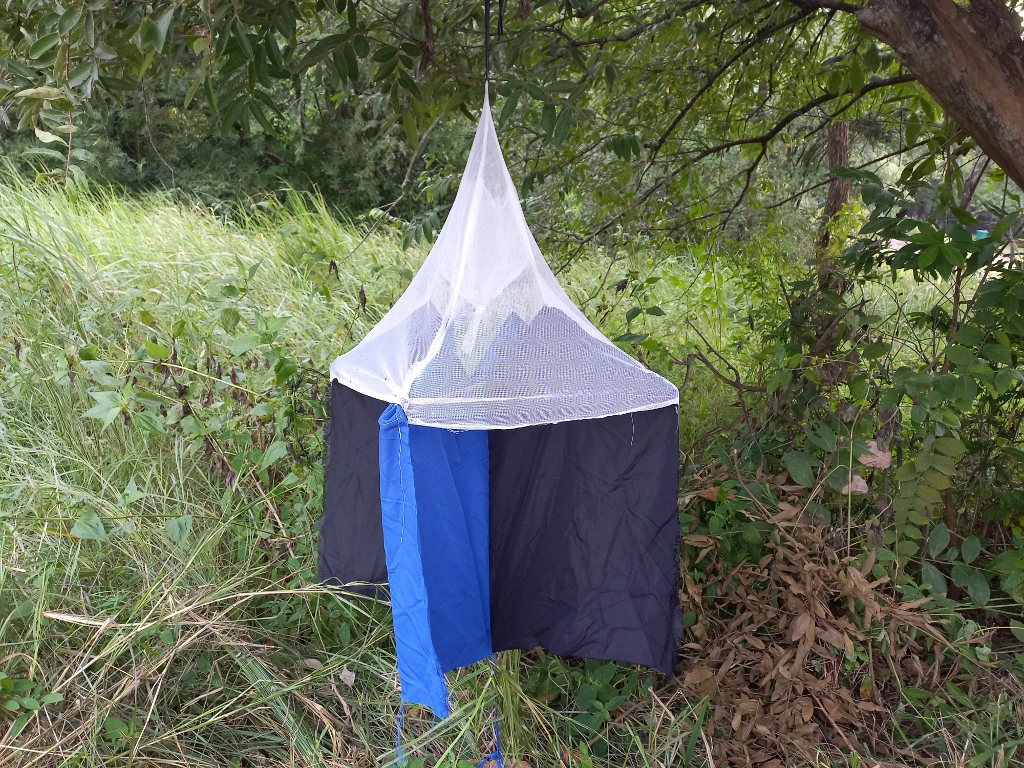 Mosquito catching contraption
Mosquito catching contraption
After this, we all gathered at the parking lot, got into the vehicle and headed back. We encountered baboons along the way again, but later, after dark, we returned to Masindi and I went to bed soon after. Such an exciting day had left me somewhat tired, so an early rest was quite welcome.
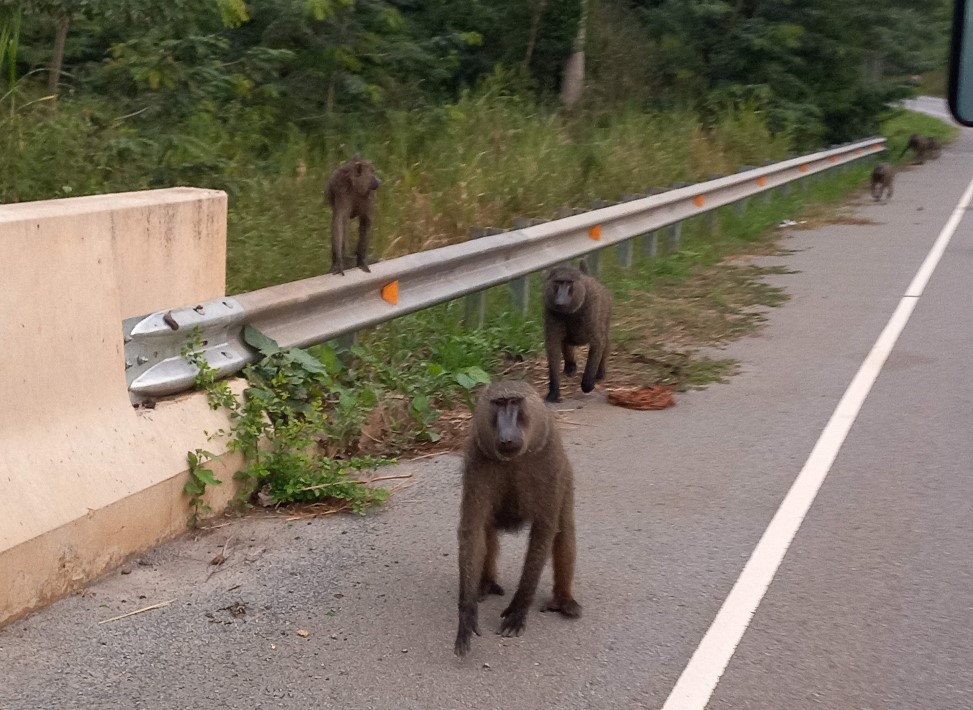 Baboons by the road
Baboons by the road
I worked over the following days, but during one break, I finally managed to photograph a butterfly. It was the first one to land near me and stay there long enough for me to take a picture. The butterfly is known by its Latin name Hypolimnas misippus.
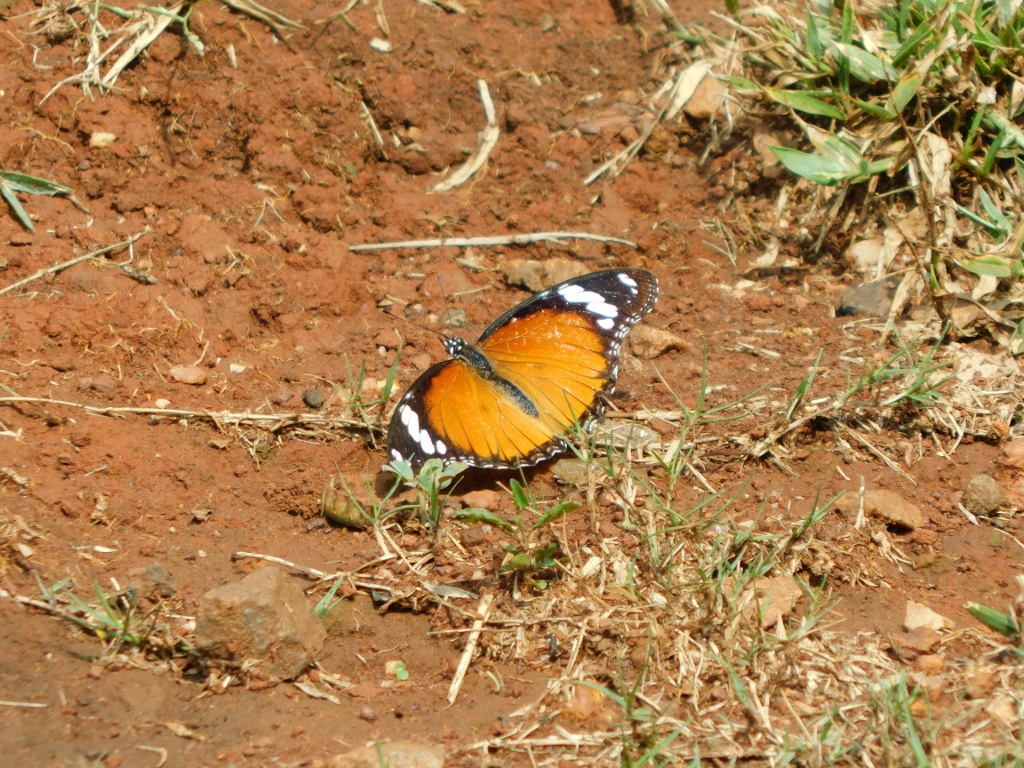 Hypolimnas misippus
Hypolimnas misippus
A couple of days later, we set off for Kampala and specifically Entebbe where the international airport is located. I sat in the front of the vehicle, so I found it particularly interesting to observe the scenes along the road.
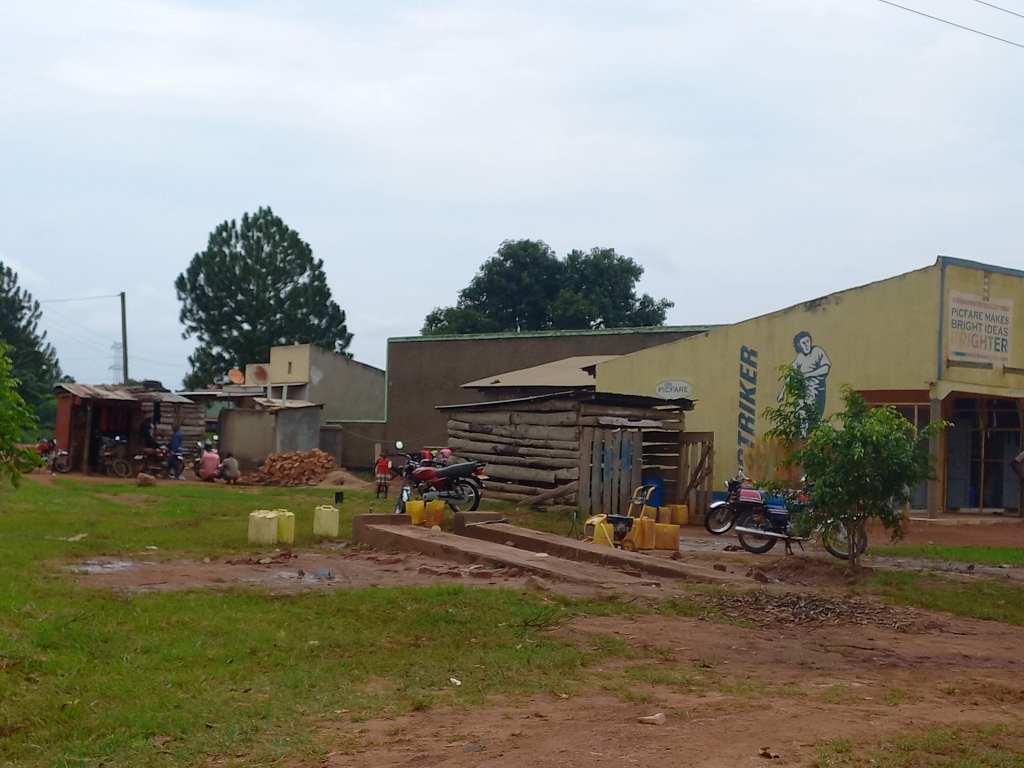 On the road from Masindi to Kampala
On the road from Masindi to Kampala
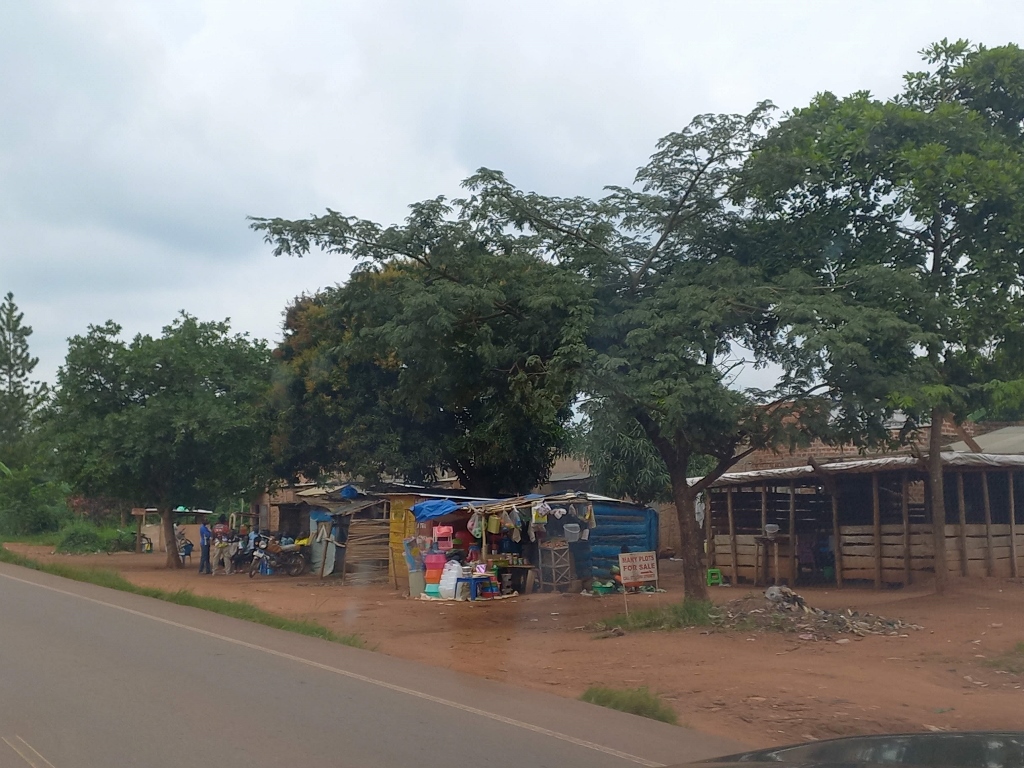 On the road from Masindi to Kampala
On the road from Masindi to Kampala
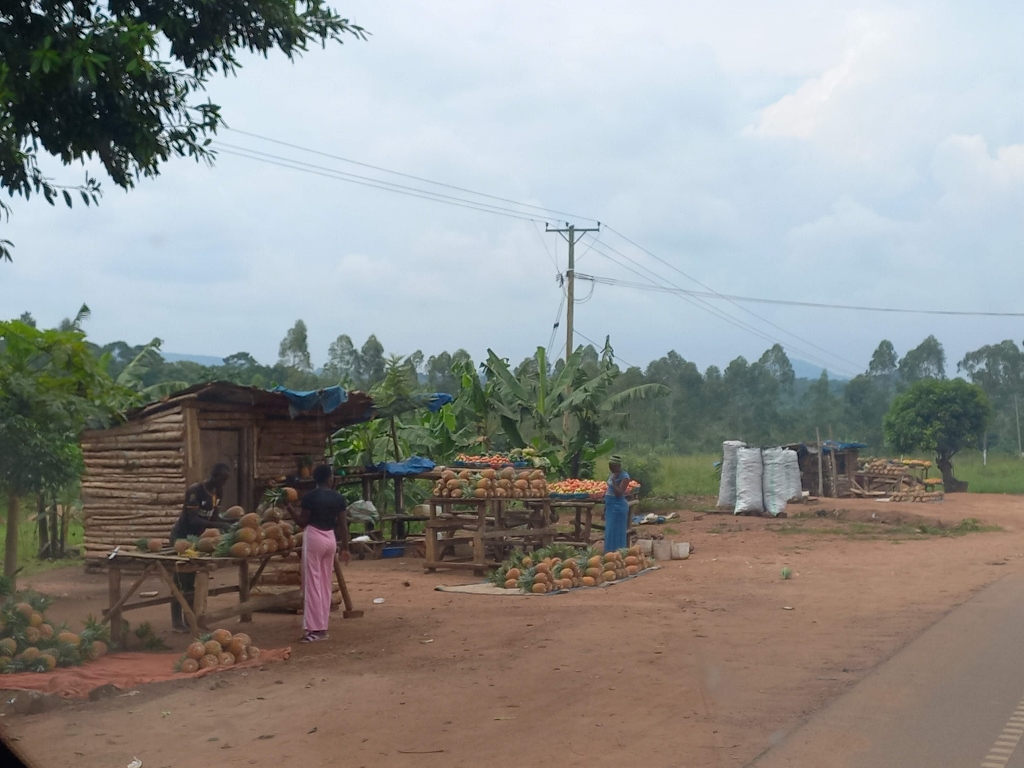 On the road from Masindi to Kampala
On the road from Masindi to Kampala
However, despite the interesting stationary sights along the road, I was also very intrigued by the scenes on the road itself. Among other things, there were trucks transporting sugarcane, which looked as though they were overloaded.
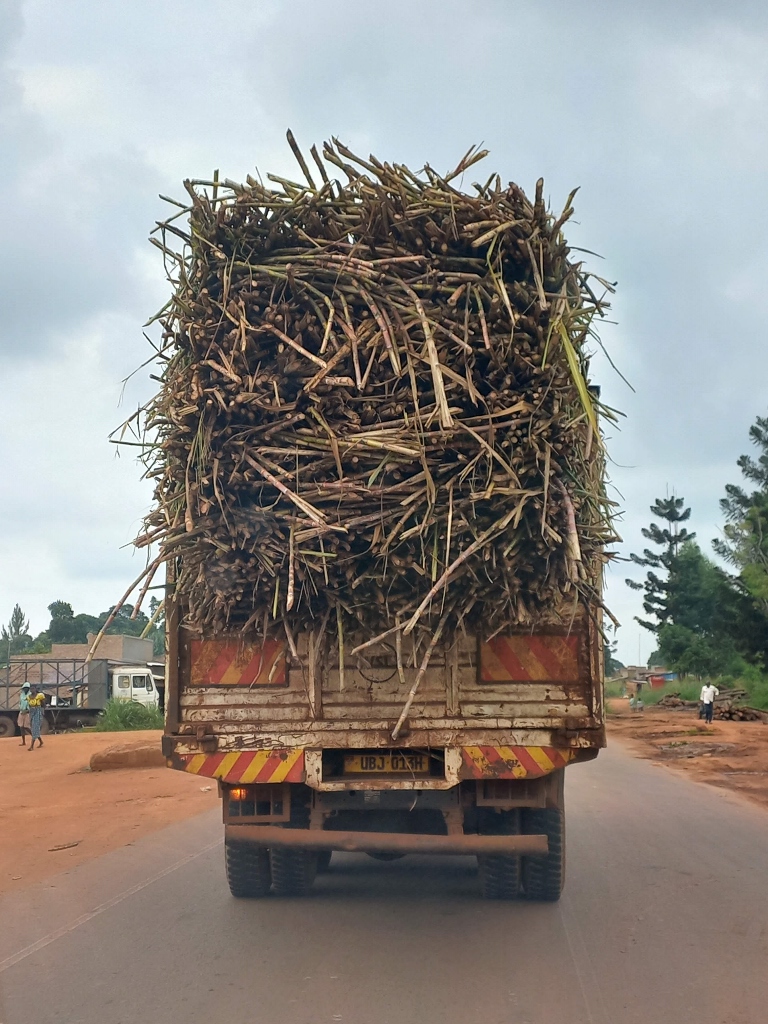 On the road from Masindi to Kampala
On the road from Masindi to Kampala
But perhaps the most fascinating thing for me was seeing what people were skilfully transporting on their motorcycles – pineapples, canisters, jackfruit, charcoal and various other goods.
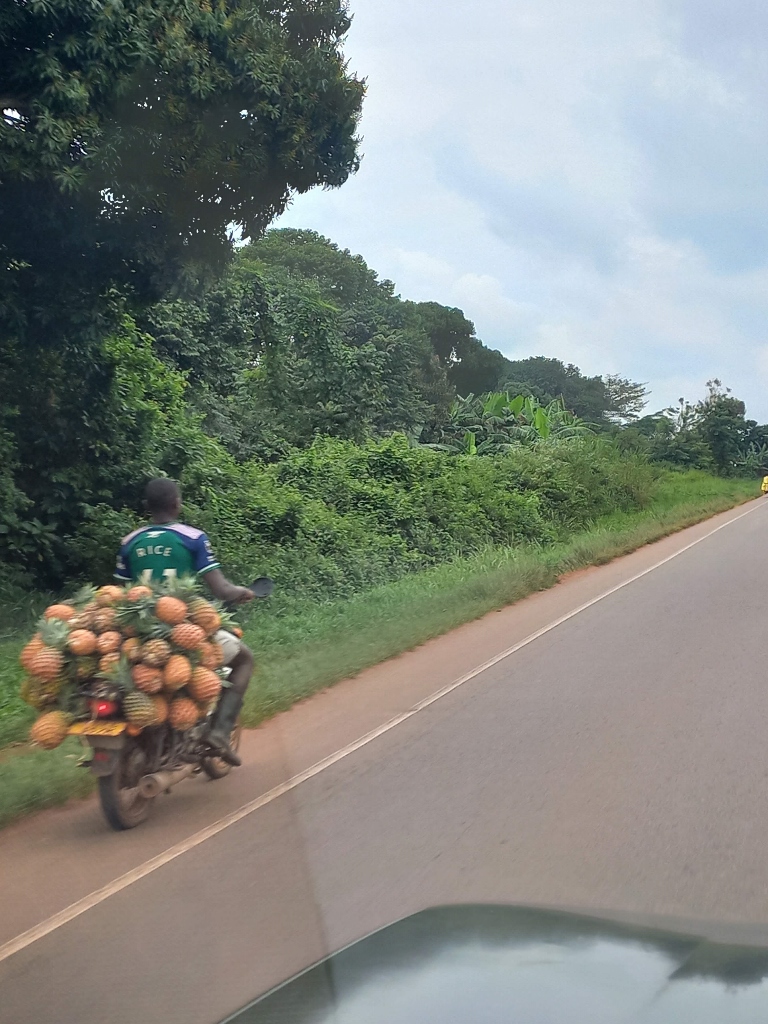 On the road from Masindi to Kampala
On the road from Masindi to Kampala
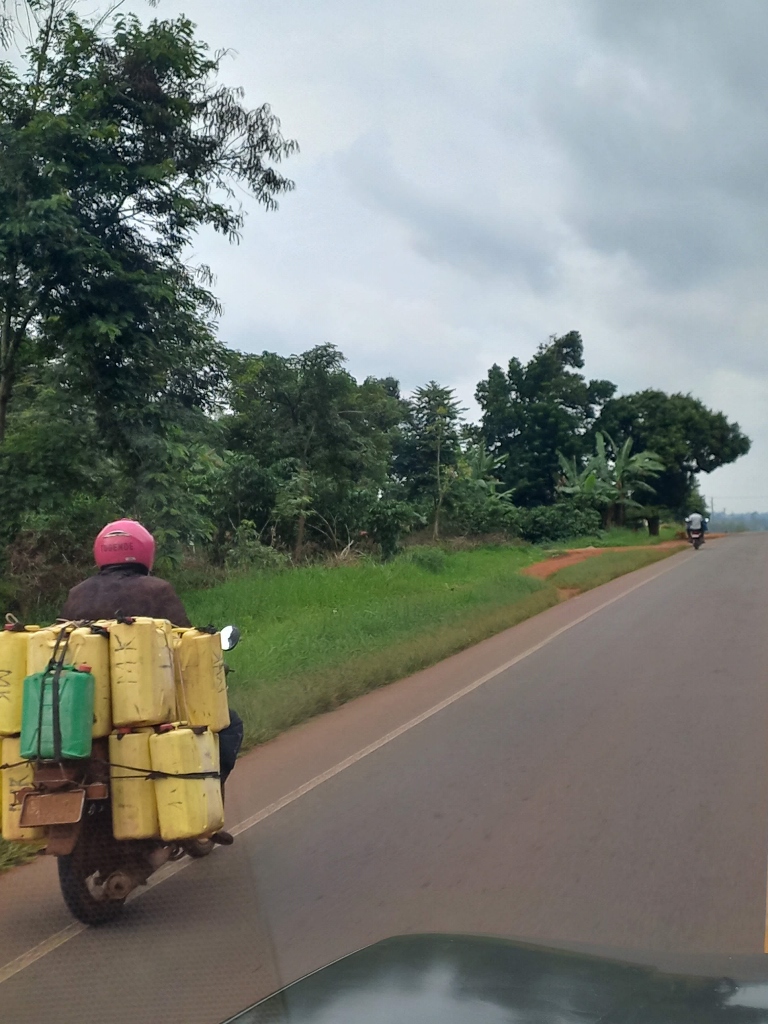 On the road from Masindi to Kampala
On the road from Masindi to Kampala
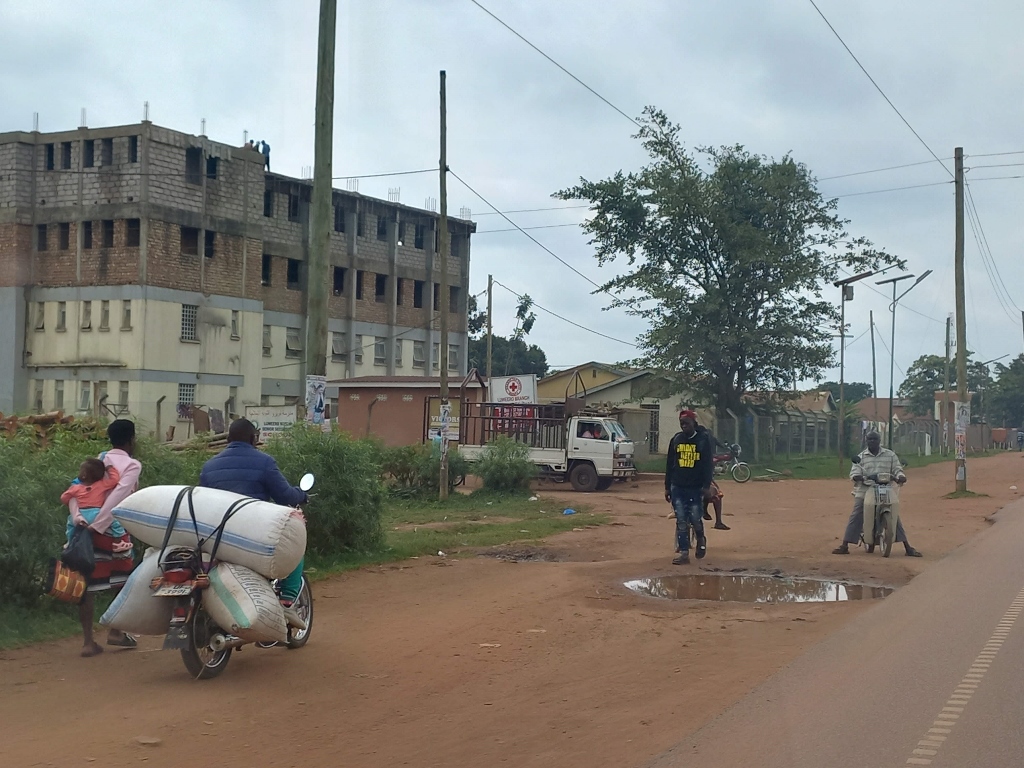 On the road from Masindi to Kampala
On the road from Masindi to Kampala
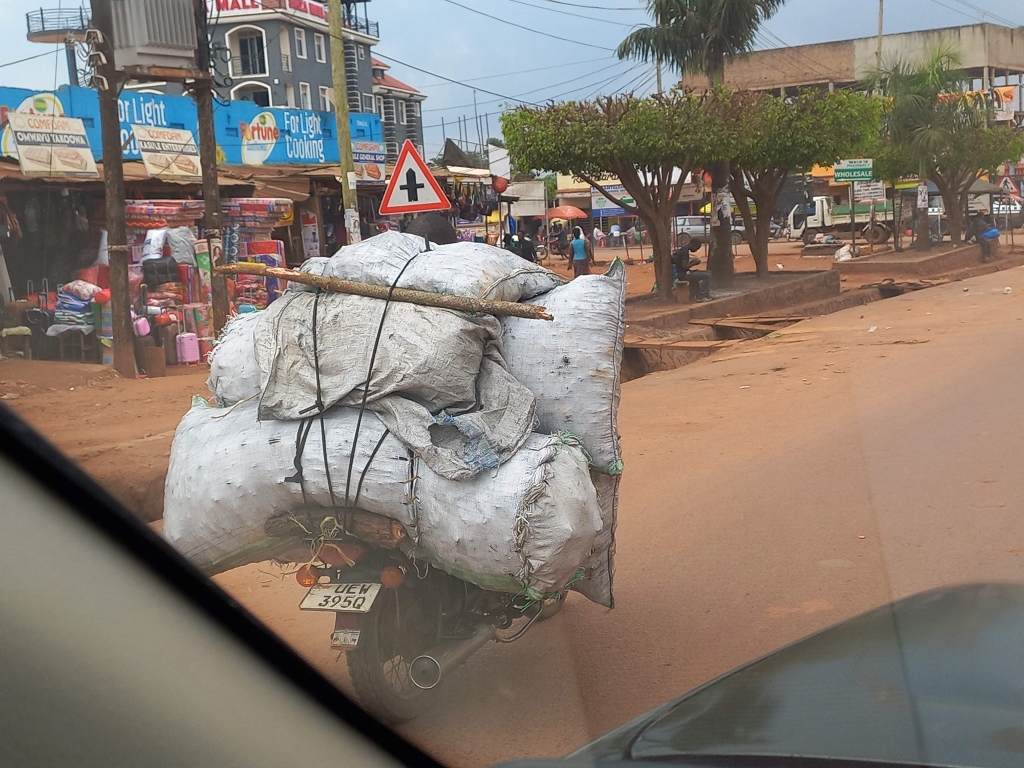 On the road from Masindi to Kampala
On the road from Masindi to Kampala
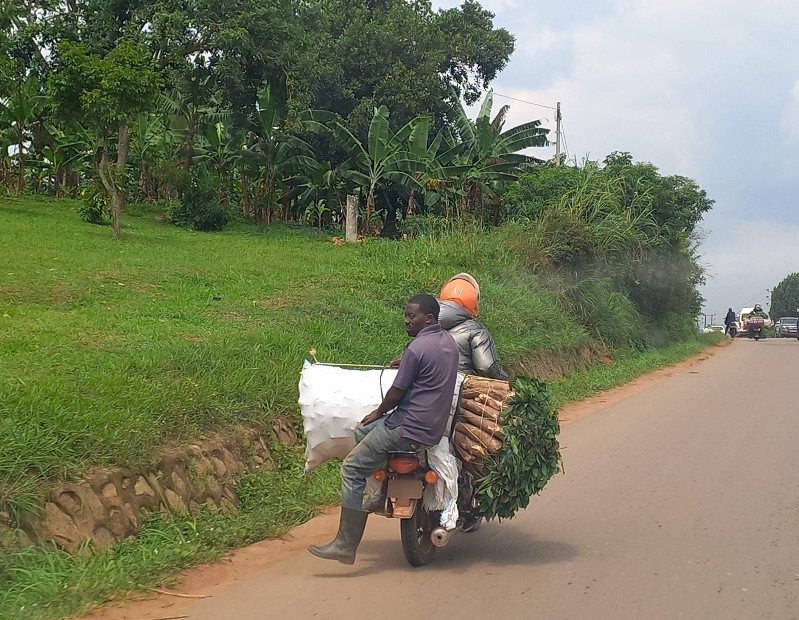 On the road from Masindi to Kampala
On the road from Masindi to Kampala
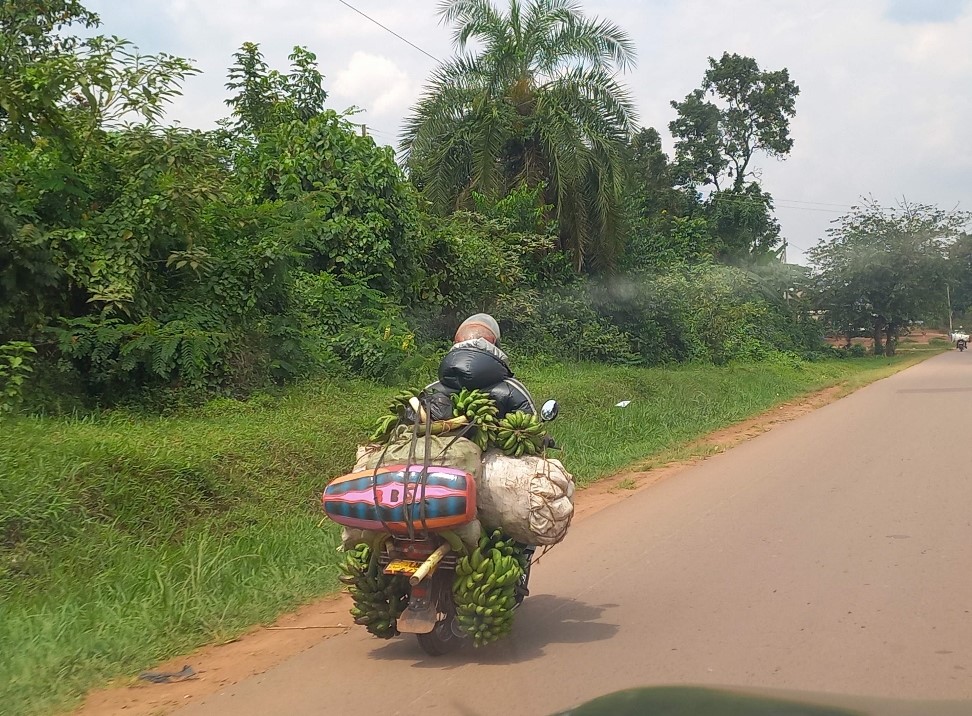 On the road from Masindi to Kampala
On the road from Masindi to Kampala
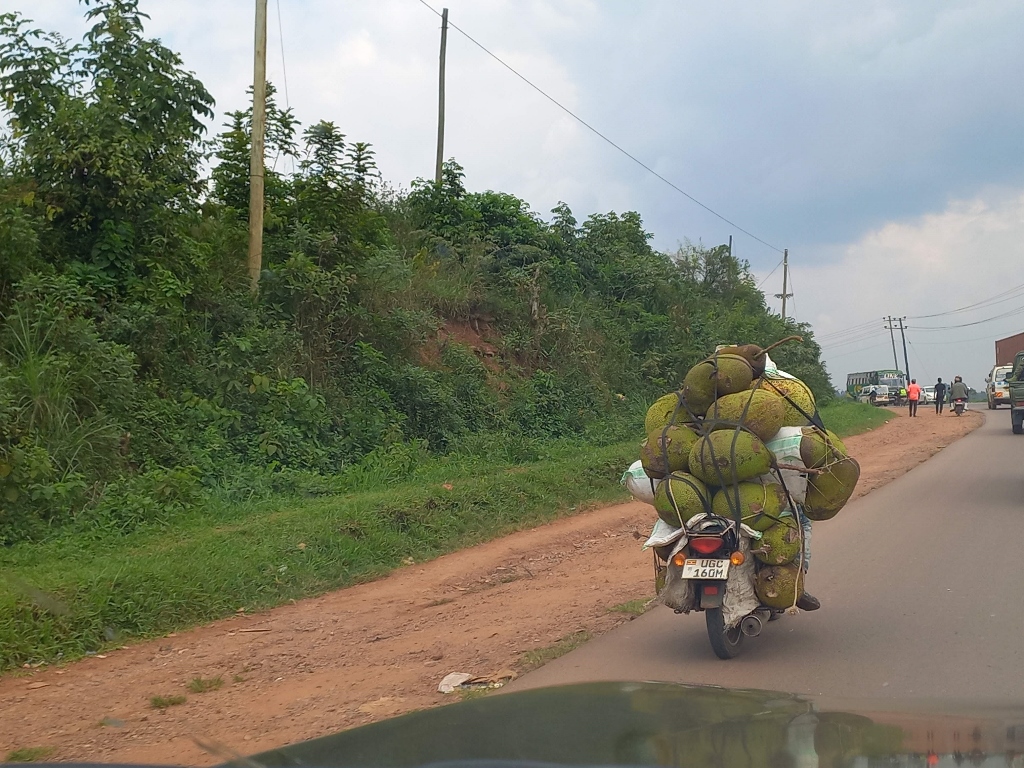 On the road from Masindi to Kampala
On the road from Masindi to Kampala
Then, at one point, we began to enter Kampala. I had previously mentioned that Kampala is a large city and this, especially in the centre, means significant traffic congestion.
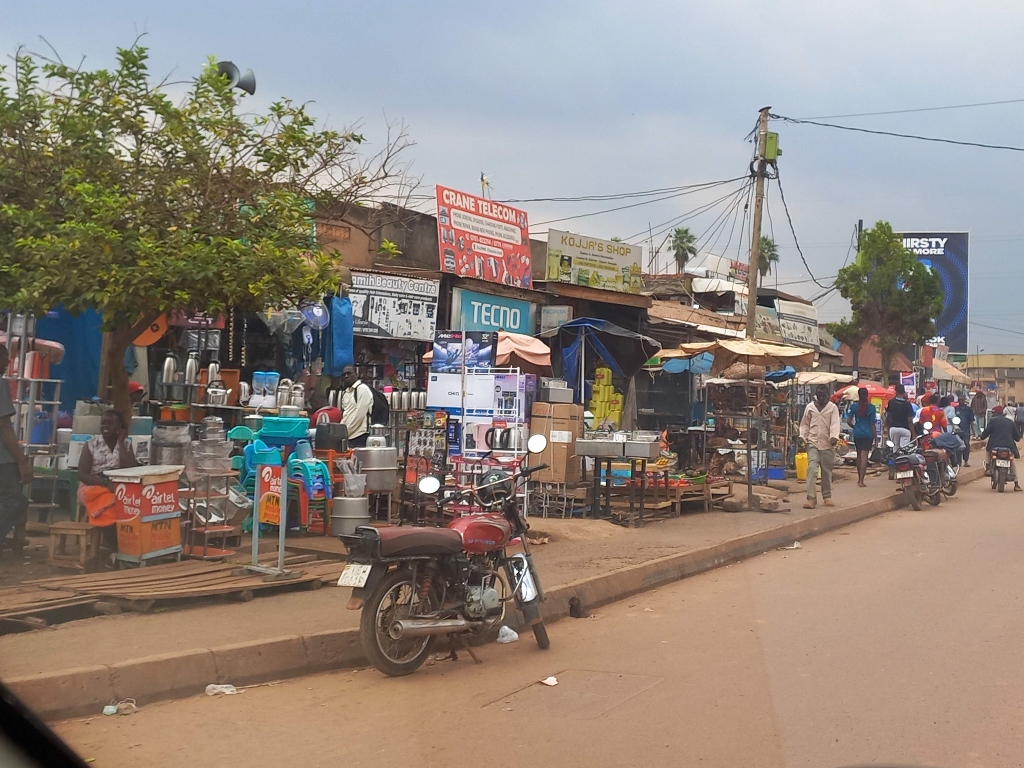 Kampala, a detail
Kampala, a detail
 Kampala, a detail
Kampala, a detail
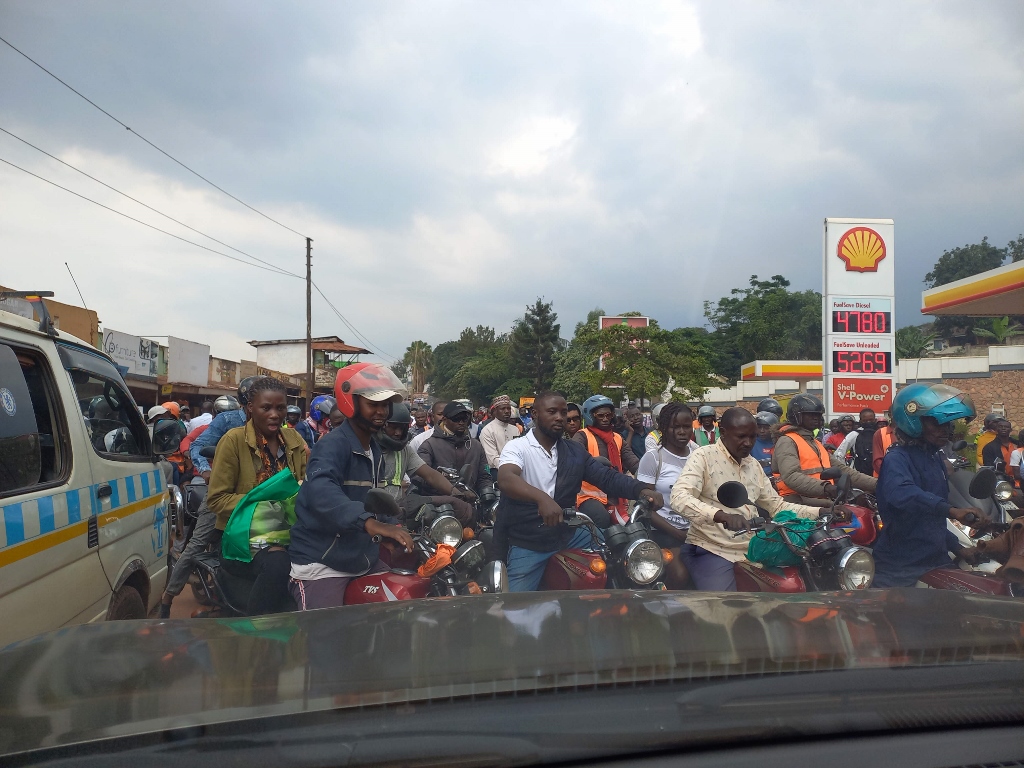 Kampala, a detail
Kampala, a detail
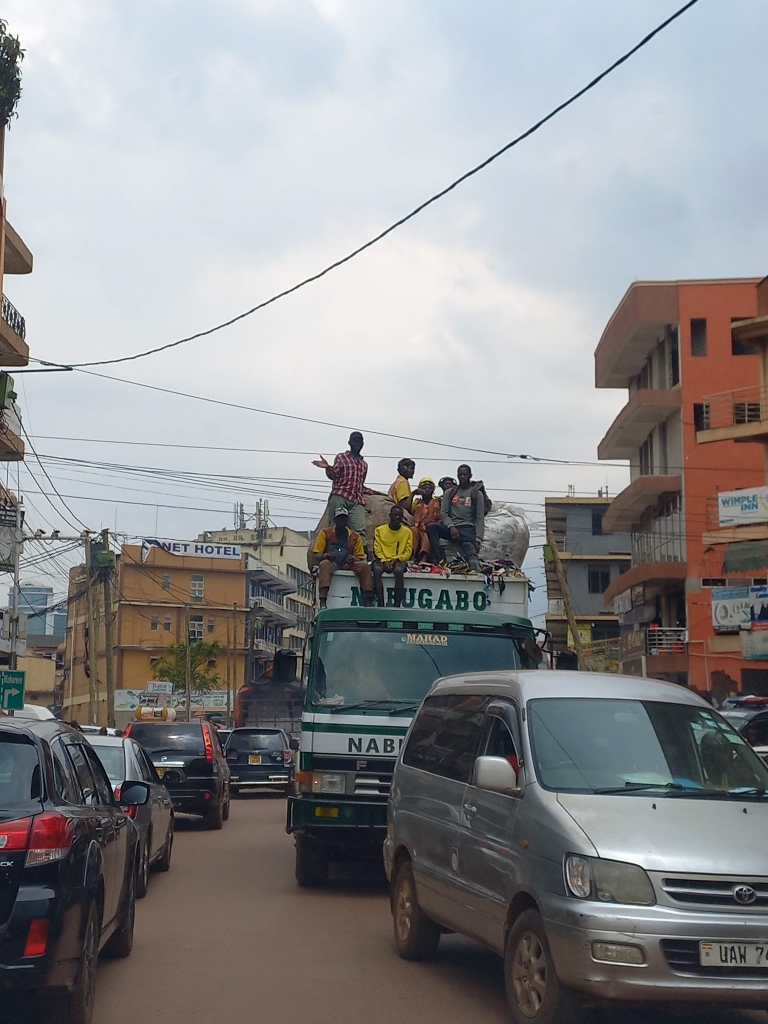 Kampala, a detail
Kampala, a detail
Since a part of my group was returning to Belgrade that same evening, we all first went together to a souvenir market before continuing on to Entebbe and the international airport.
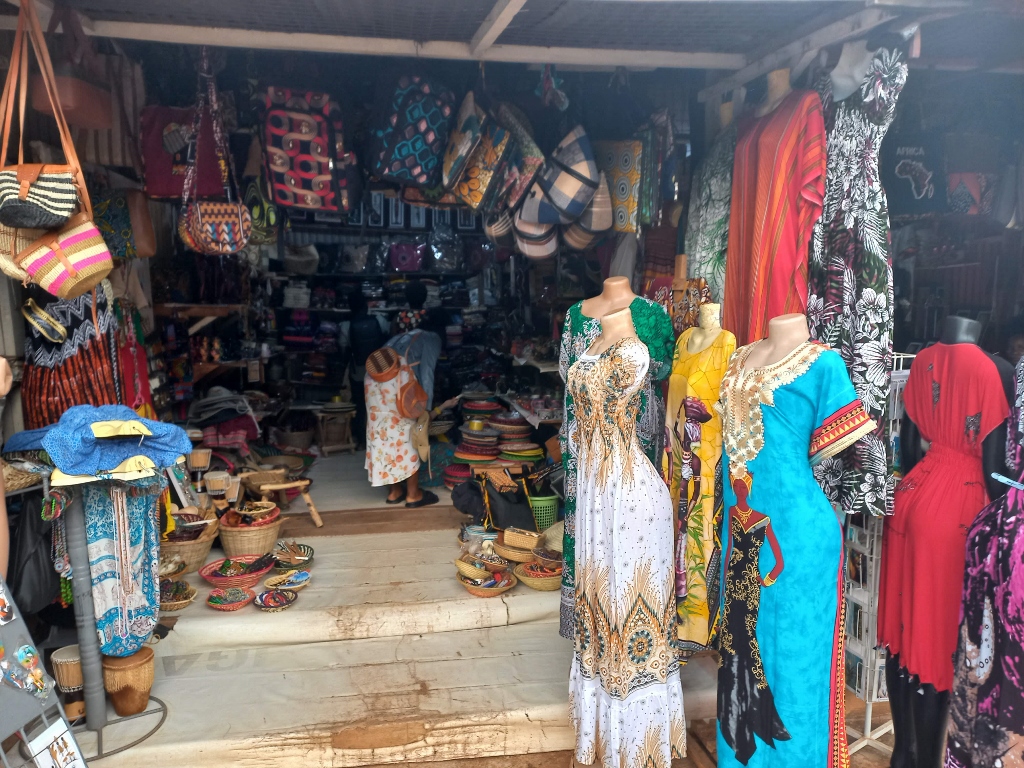 Shop with tourist goods in Kampala
Shop with tourist goods in Kampala
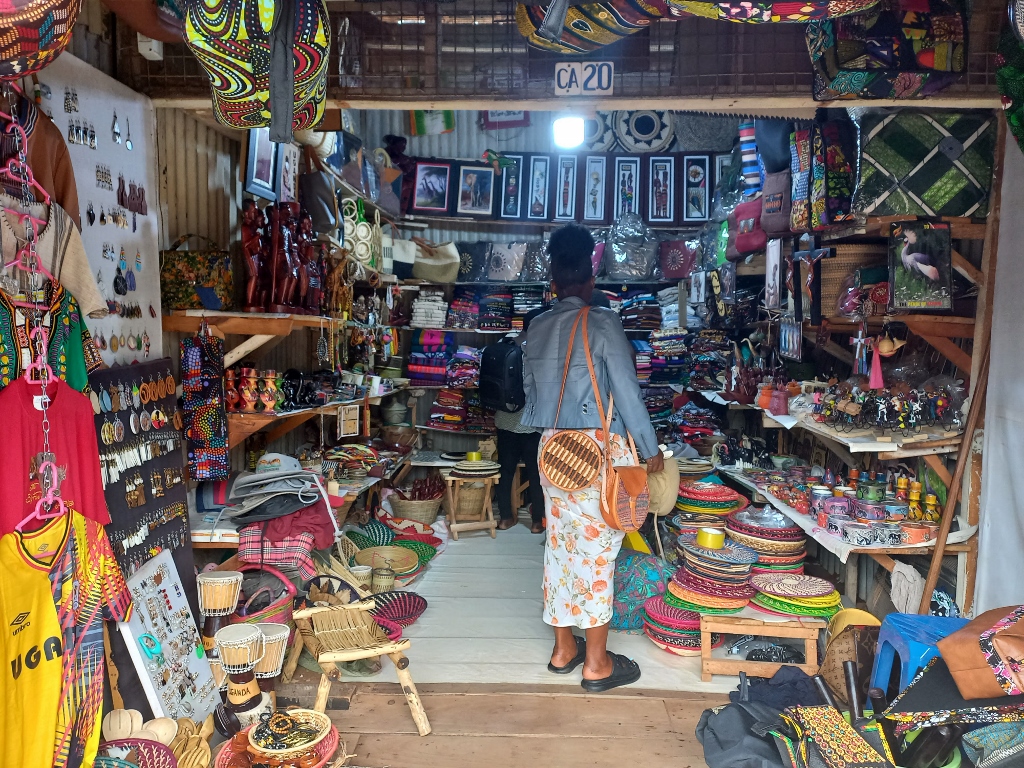 Shop with tourist goods in Kampala
Shop with tourist goods in Kampala
In this time period, I even managed to photograph some birds. One was a marabou stork (Leptoptilos crumenifer) in flight, while I also spotted almost an entire flock of hadada ibises (Bostrychia hagedash).
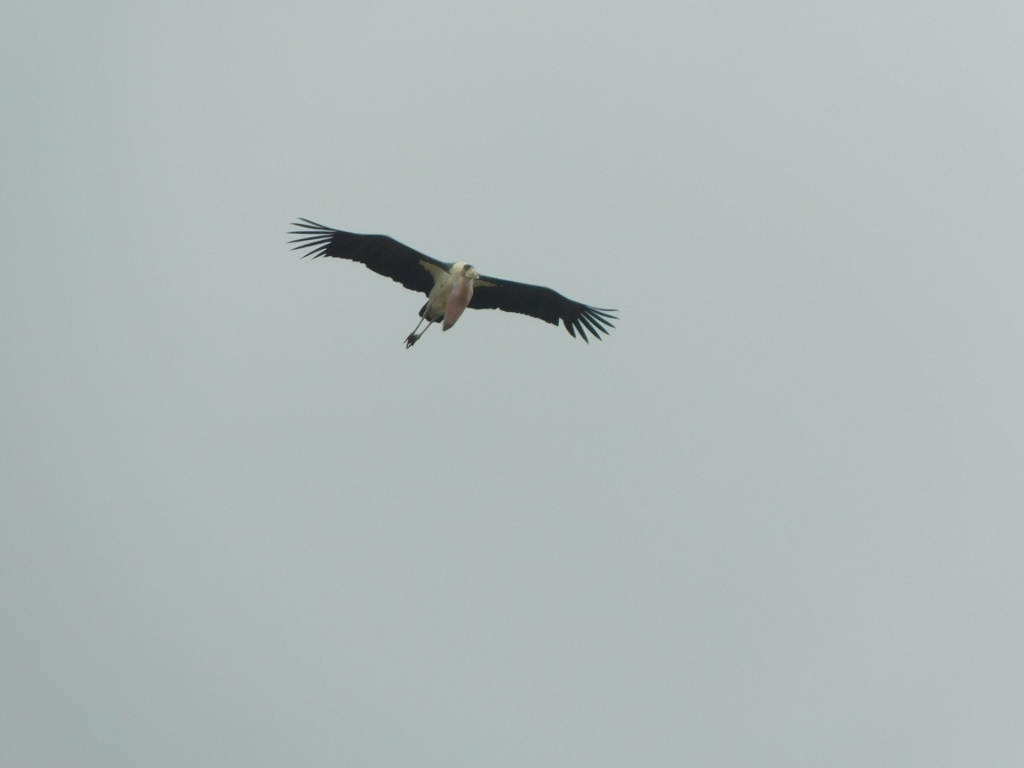 Marabou stork
Marabou stork
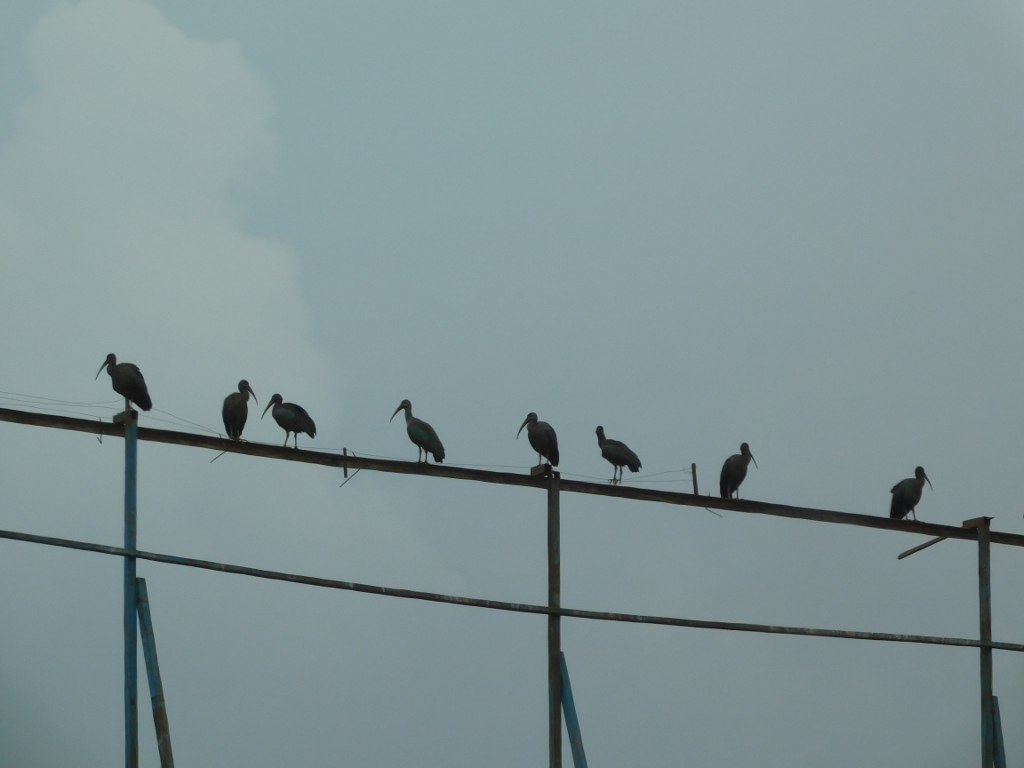 Hadada ibises
Hadada ibises
In the meantime, the weather changed and the clouds mostly cleared, so while we were driving along Lake Victoria the colours were beautiful.
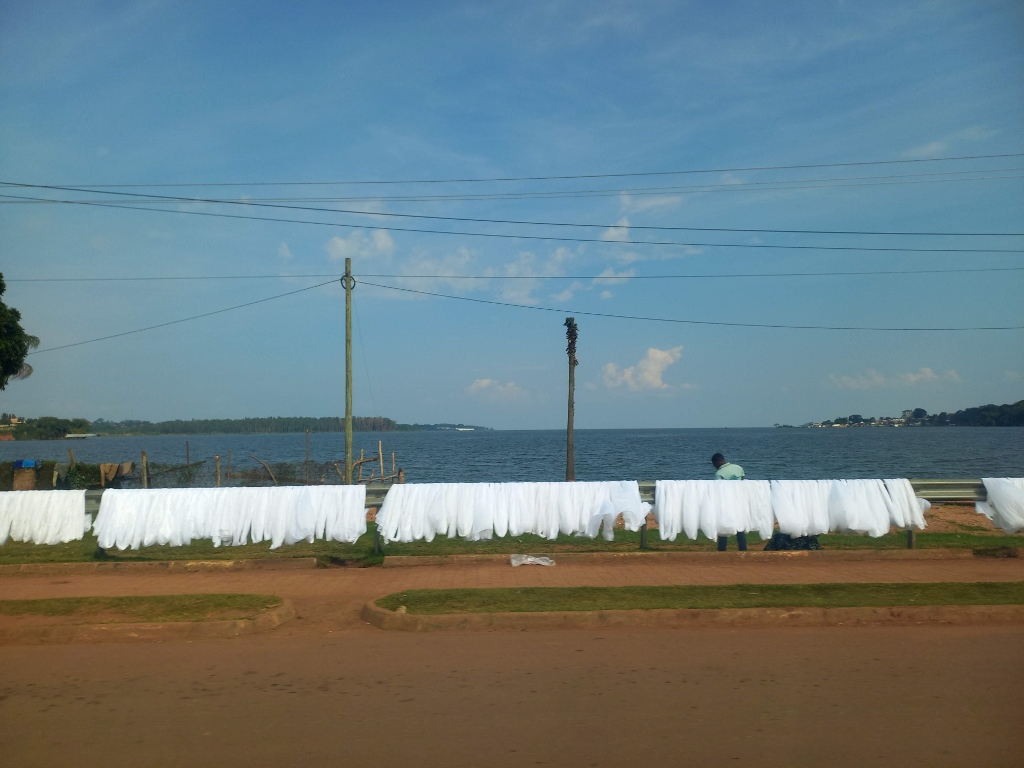 Victoria Lake between Kampala and Entebbe
Victoria Lake between Kampala and Entebbe
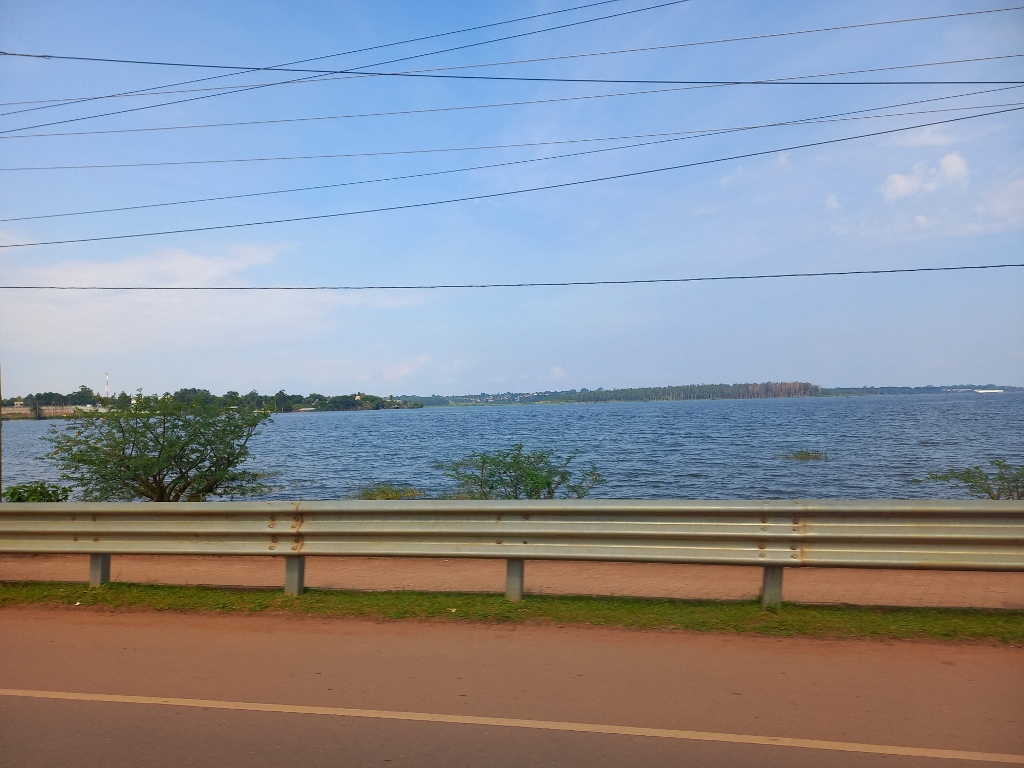 Victoria Lake between Kampala and Entebbe
Victoria Lake between Kampala and Entebbe
After we saw off our colleagues at the airport, Duda and I, along with Susan, our Ugandan friend, returned to the hotel where we spent the night.
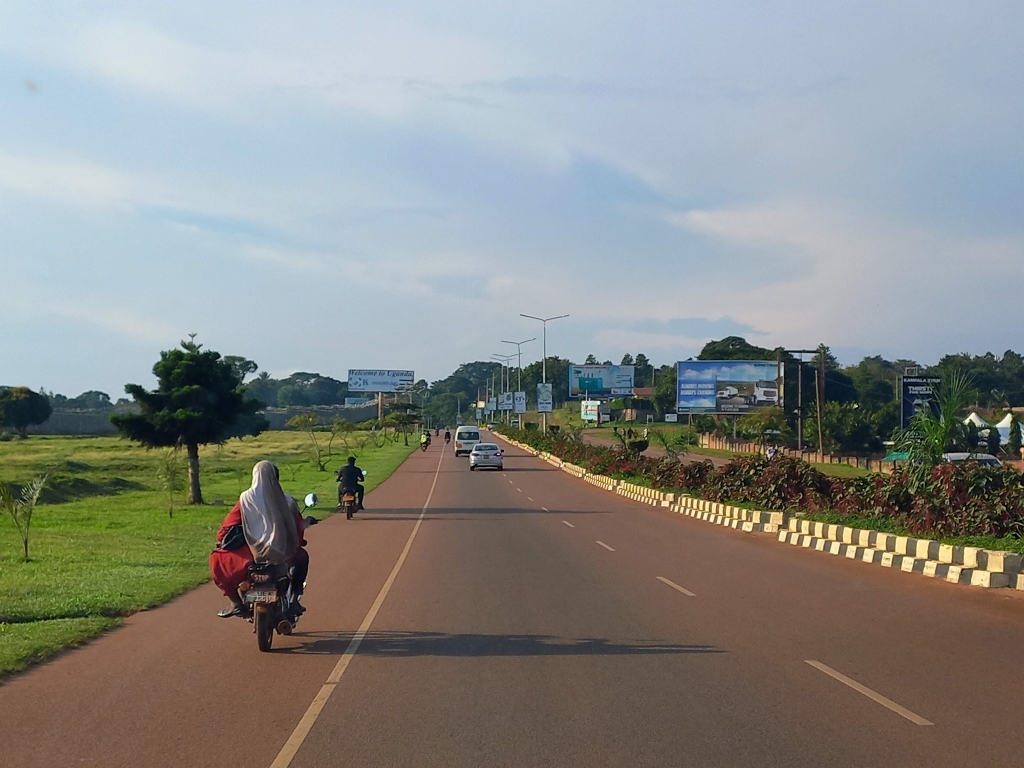 Road from the airport in Entebbe
Road from the airport in Entebbe
For our farewell, the three of us went to a late lunch at the hotel and on the recommendation we ordered tilapia. Tilapia is a common name for nearly a hundred species of freshwater fish native to Africa. For example, the Nile tilapia (Oreochromis niloticus) was consumed in ancient Egypt, where it symbolised rebirth and was associated with the goddess Hathor. Considering that the Nile both feeds and drains Lake Victoria here, it was particularly fitting to eat this type of fish.
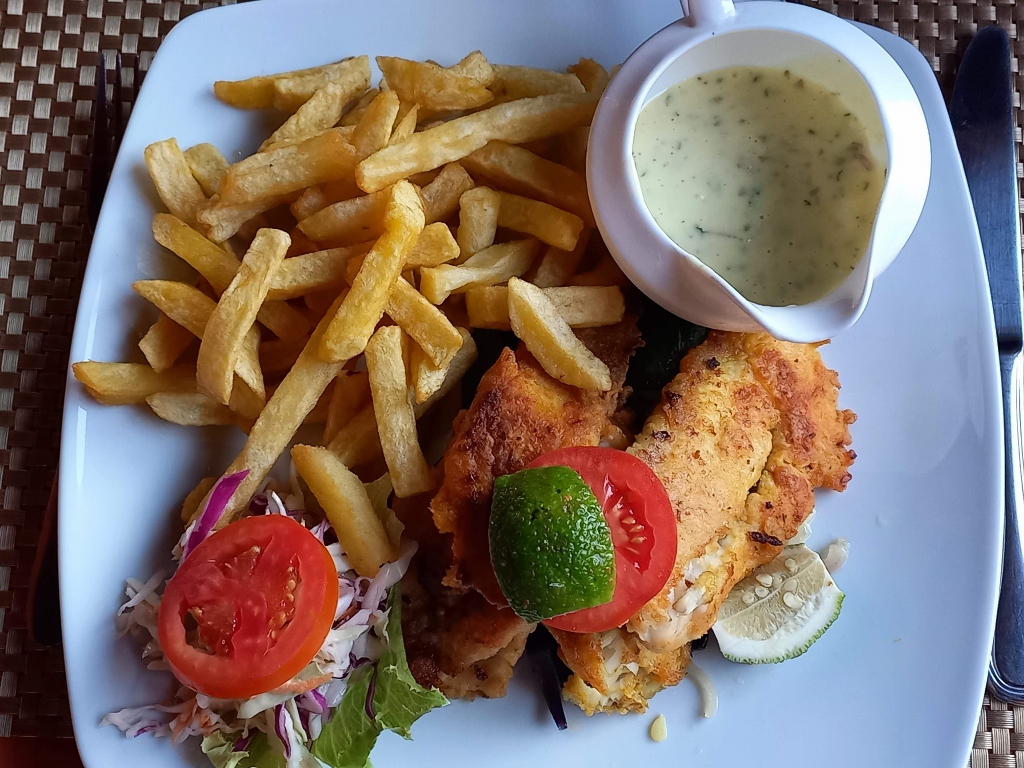 Lunch in Entebbe
Lunch in Entebbe
Later, Duda and I parted with Susan, while the two of us went to the hotel garden in order to chat a bit more and get some refreshments. Several hours later, we had to leave the hotel and head to the airport. For a farewell, what could be better than a cold Ugandan beer with the image of a Ugandan kob on the label?
 Cold Ugandan beer
Cold Ugandan beer
I just hope that in Uganda there will always be at least one bottle of beer “with my name on it” waiting for me to return to this wonderful country and embrace my dear friends once again.